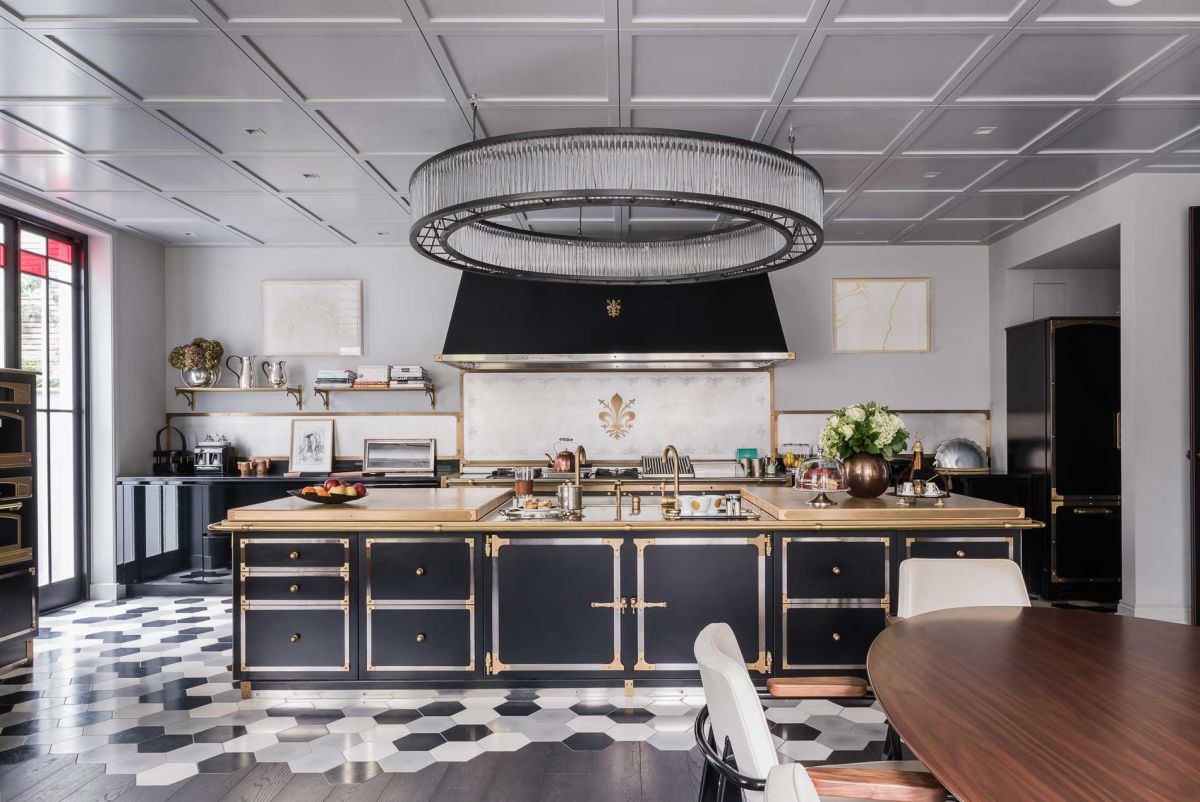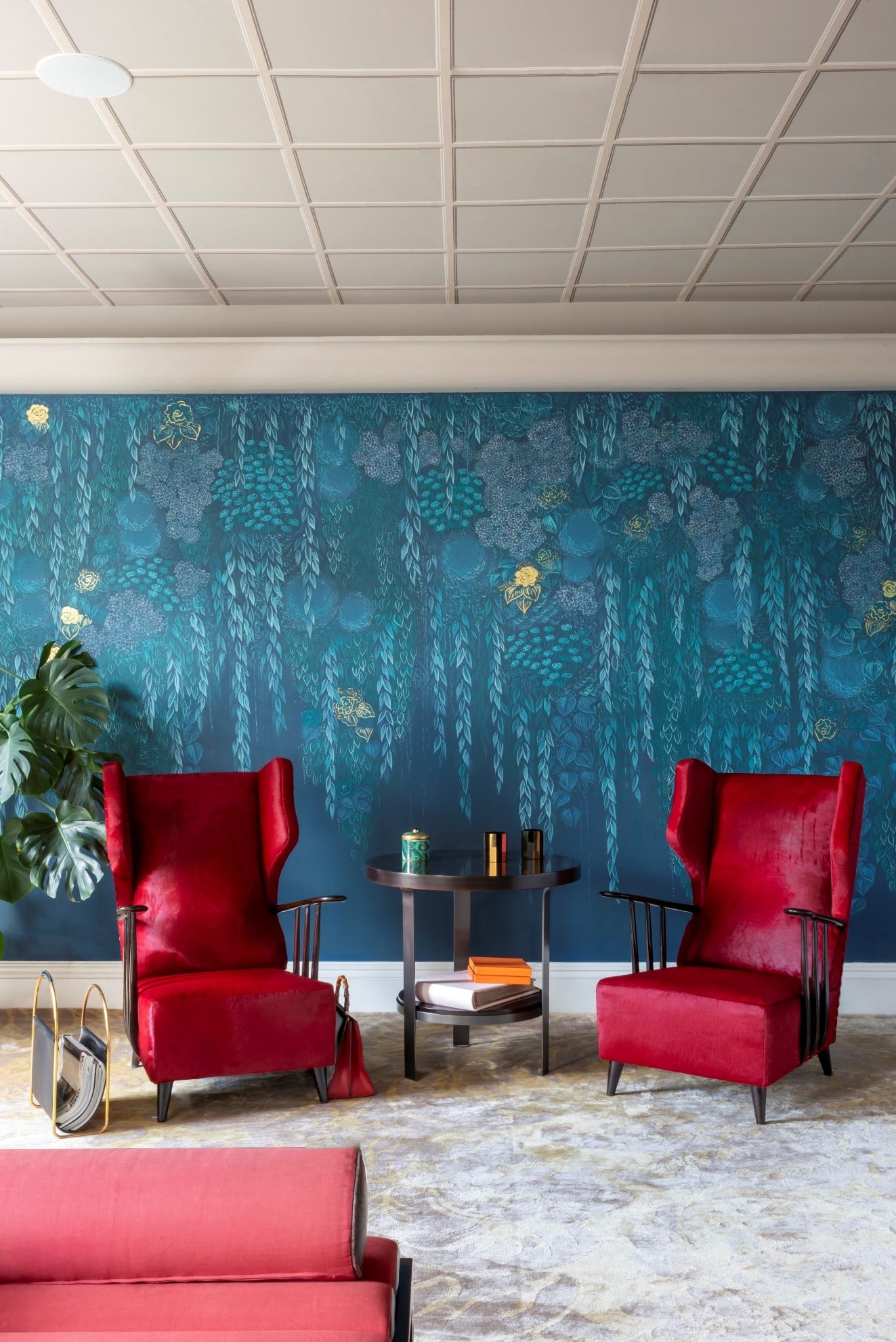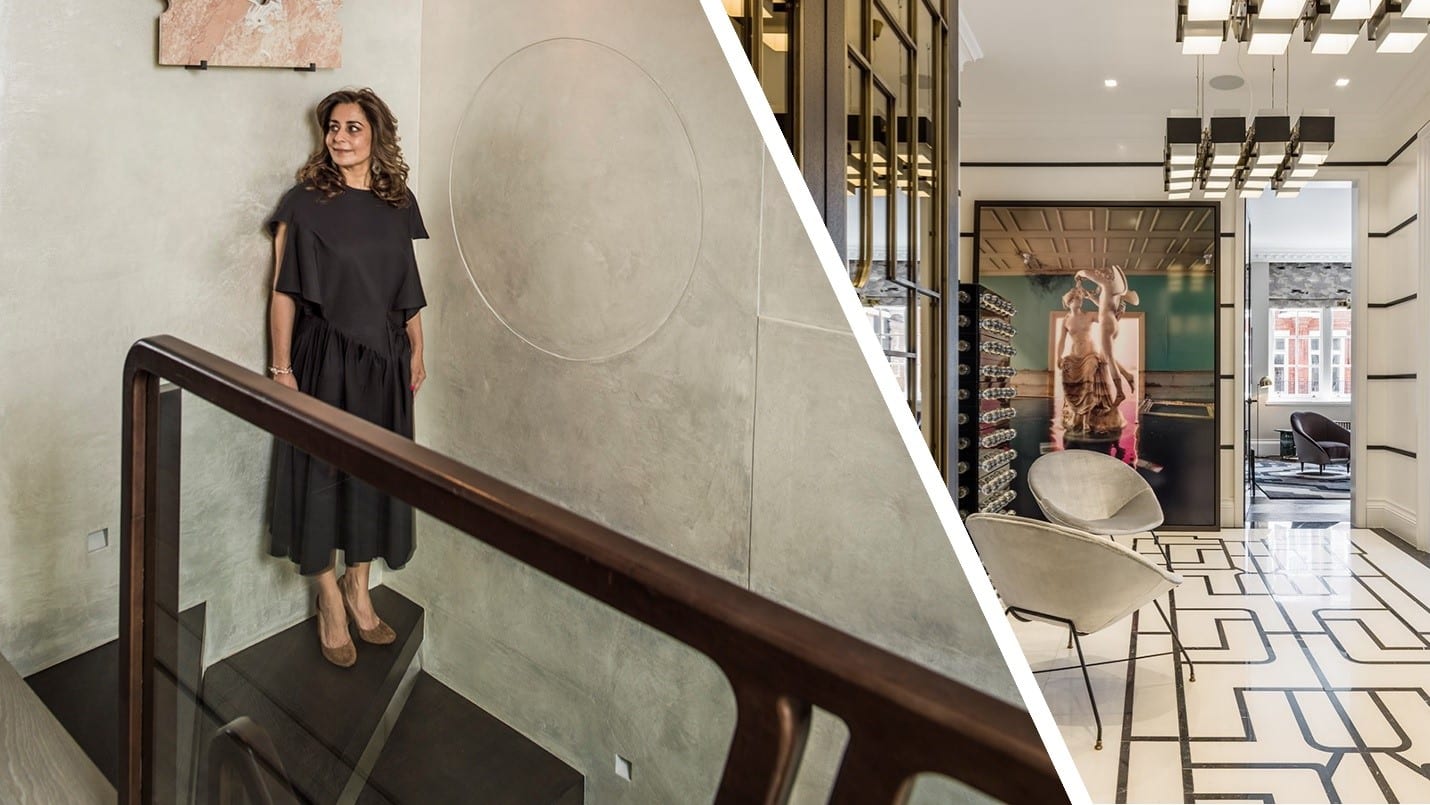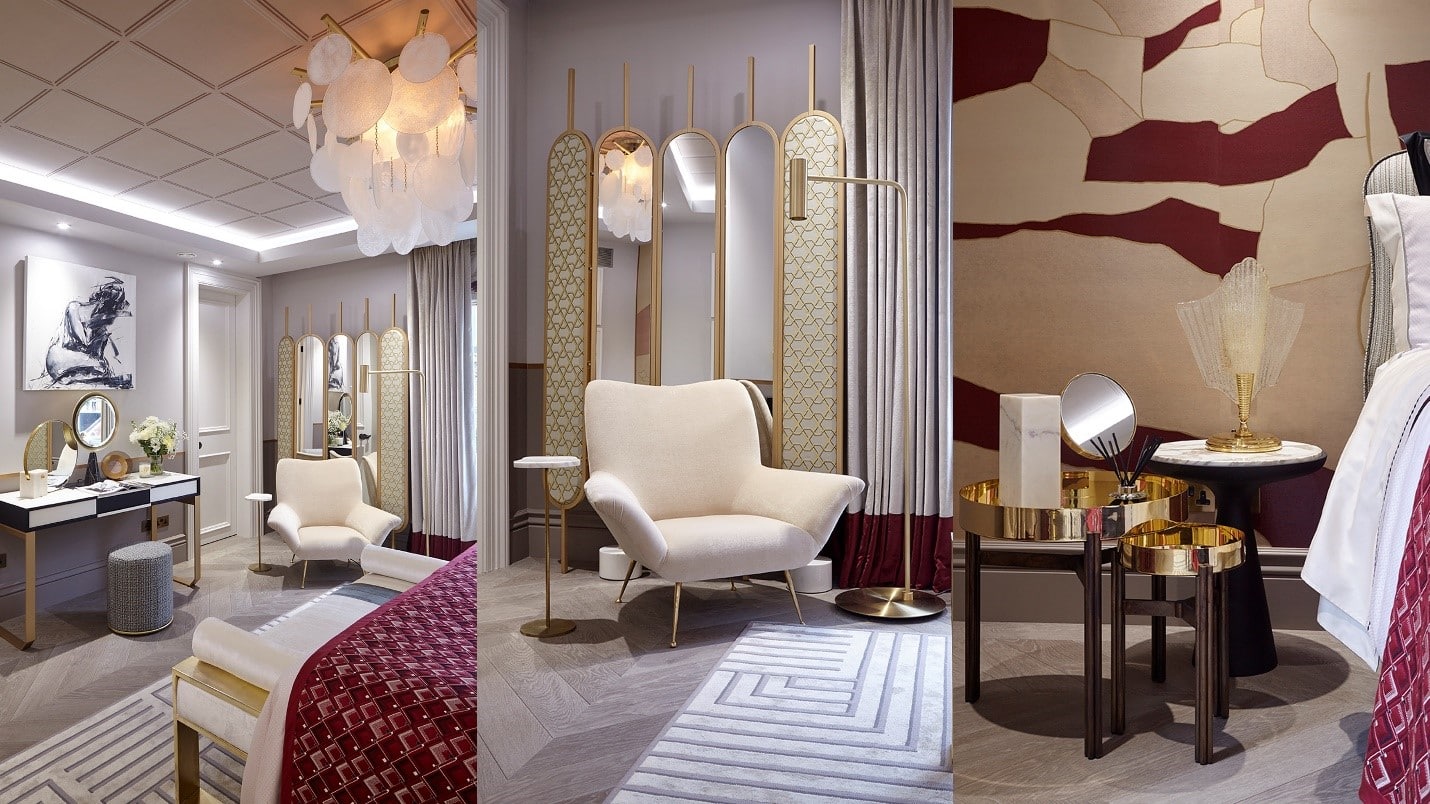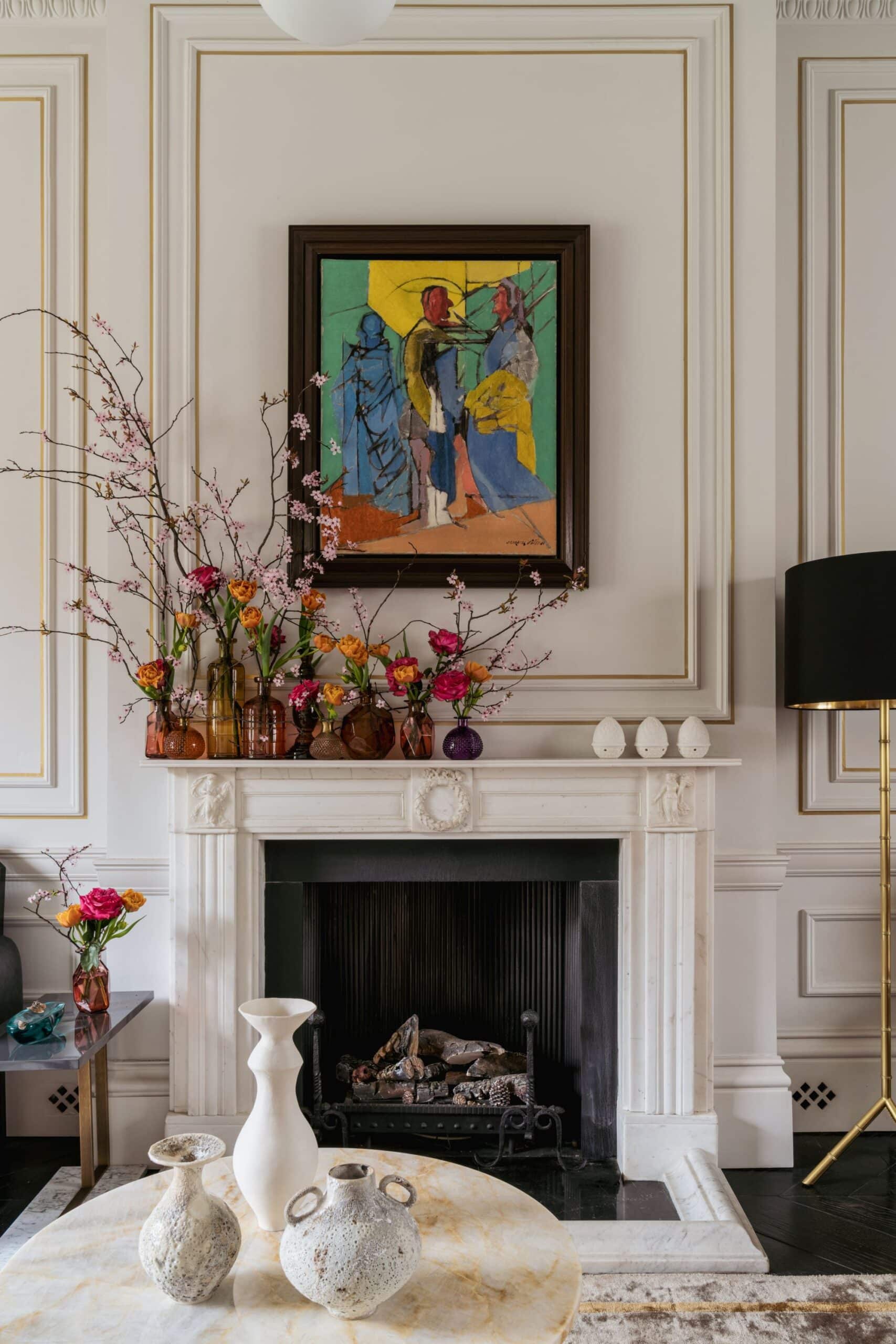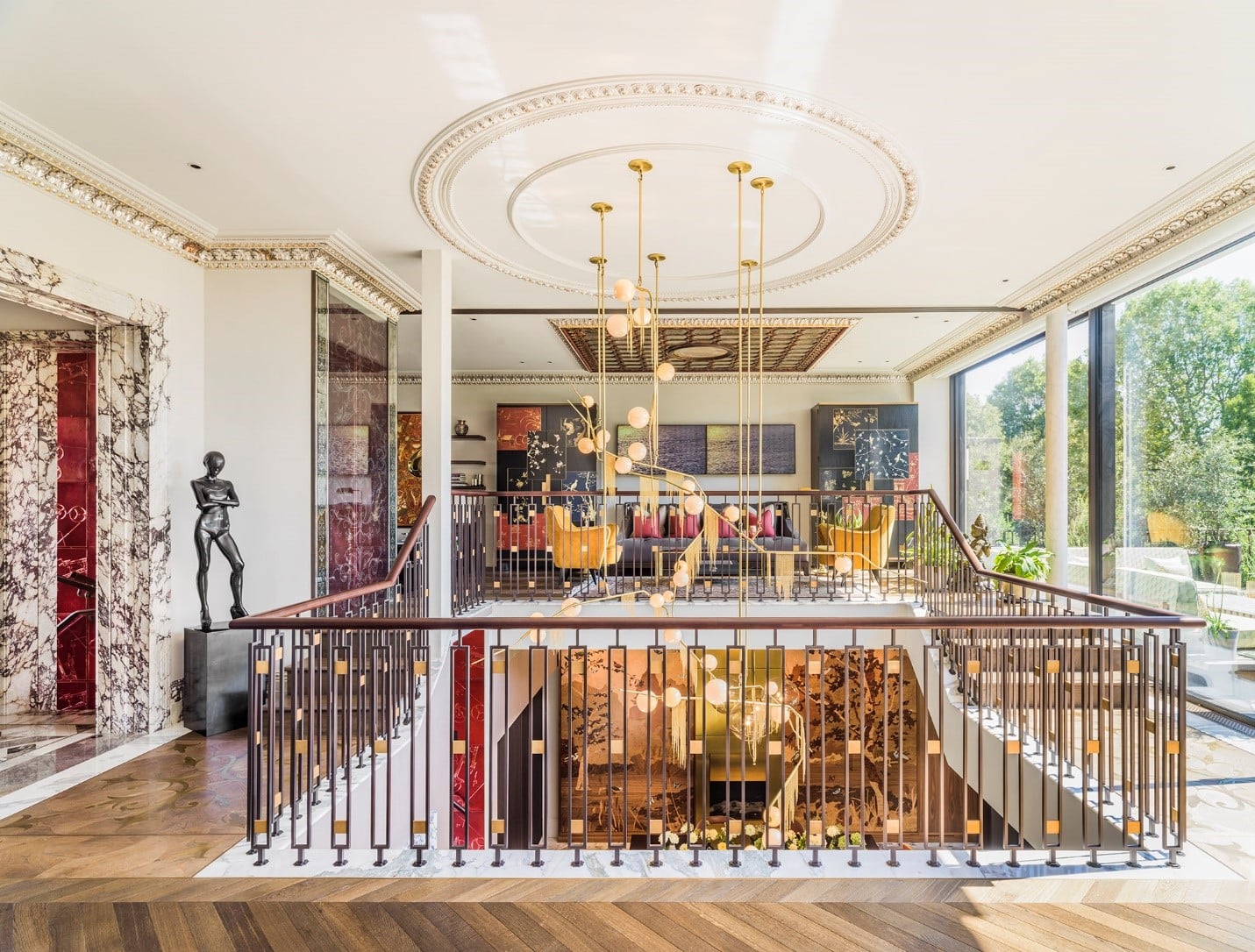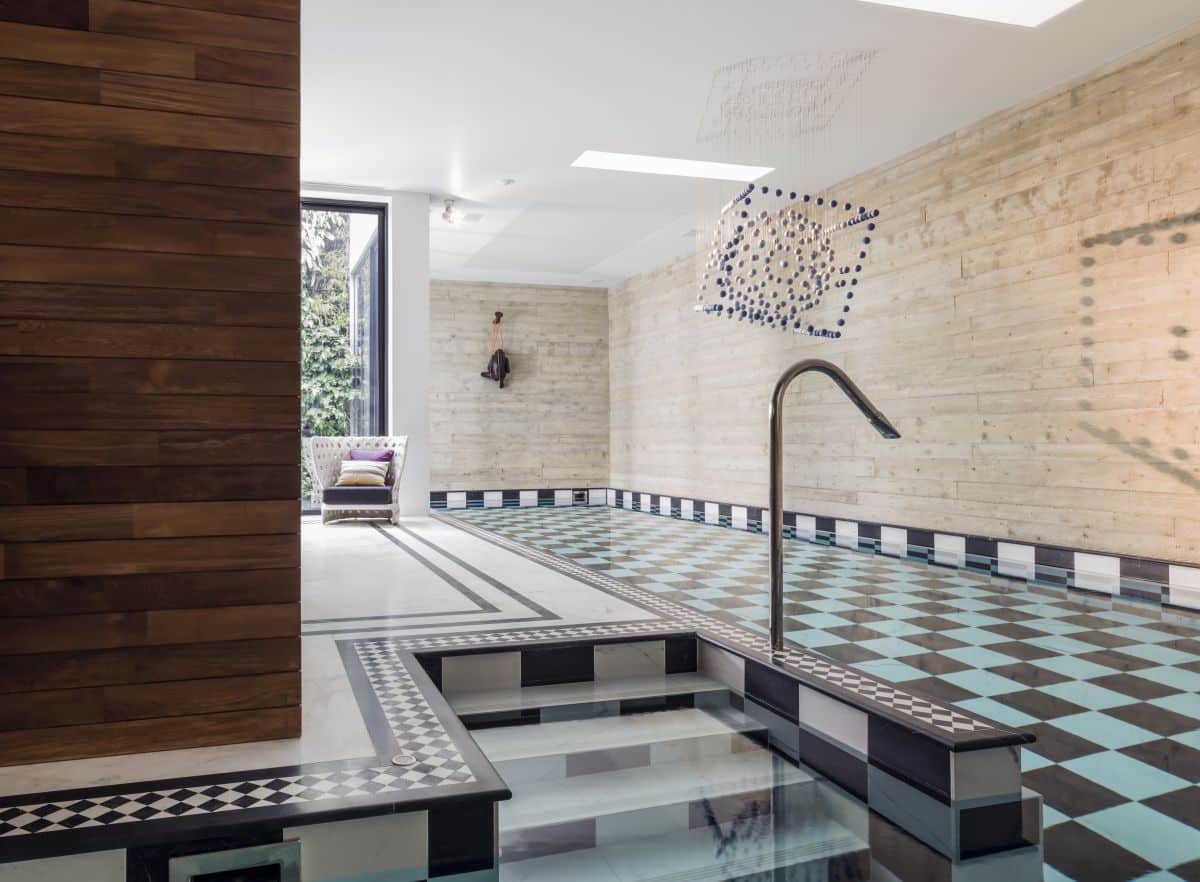
Designing a home gym that perfectly suits your needs and aesthetic preferences can greatly enhance your fitness journey. In this blog post, we will explore various design elements that can help you create the ultimate workout space. From choosing more muted colors to incorporating must-have equipment, showcasing the space with glass, utilizing mirrors and metallic finishes, ensuring proper airflow and acoustics, and adding essential amenities like a fridge and stereo, we will cover all the essential aspects of designing a home gym that will inspire and motivate you.
Choosing Muted Colors for a Calming Environment
Unlike commercial gyms with their vibrant and energetic color schemes, a home gym can benefit from a more serene and calming atmosphere. Opting for muted colors such as soft greys, earthy tones, or pastel shades can help create a relaxing ambiance that promotes focus and concentration. These colors also provide a neutral backdrop that allows the focus to remain on your workout equipment and personal achievements.
Views and Wall Finishes for Inspiration
If your home gym lacks a picturesque outdoor view, you can still create an inspiring environment by utilizing interesting wall finishes. Consider landscape-inspired wallpapers, motivational quotes, or even large-scale artwork that resonates with your fitness journey. These design elements can provide visual stimulation and keep you motivated during your workouts.
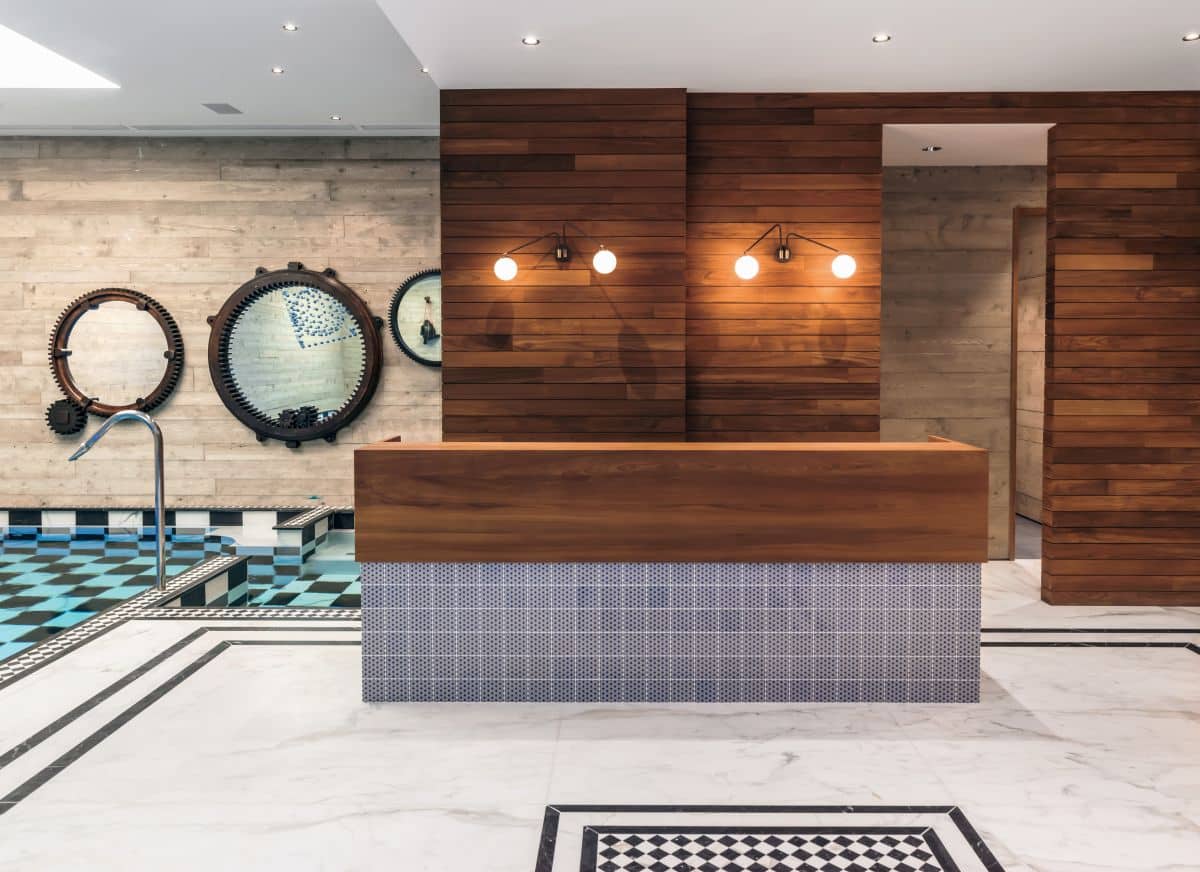
Must-Have Equipment for an Effective Workout
Selecting the right equipment is crucial for a well-rounded home gym. Focus on incorporating versatile pieces that cater to your fitness goals and preferences. Essential items might include a treadmill or elliptical machine, weight bench, dumbbells or kettlebells, resistance bands, and a stability ball. Investing in quality equipment will ensure a safe and effective workout routine.
Showcasing the Space with Glass
To create a sense of openness and connection to the rest of your home, consider incorporating glass elements into your home gym design. Large windows or glass doors not only bring in natural light but also allow you to showcase your fitness haven from outside the room. This can be particularly beneficial if you have a beautiful backyard or garden that can serve as an additional source of inspiration during workouts.
Utilizing Mirrors and Metallic Finishes
Mirrors play a vital role in any gym, as they provide a visual feedback of your form and technique. Consider installing full-length mirrors strategically to create an illusion of a larger space while also reflecting natural light. Additionally, incorporating metallic finishes on the ceiling can add a touch of luxury and elegance to your home gym, making it feel more like a personal retreat.
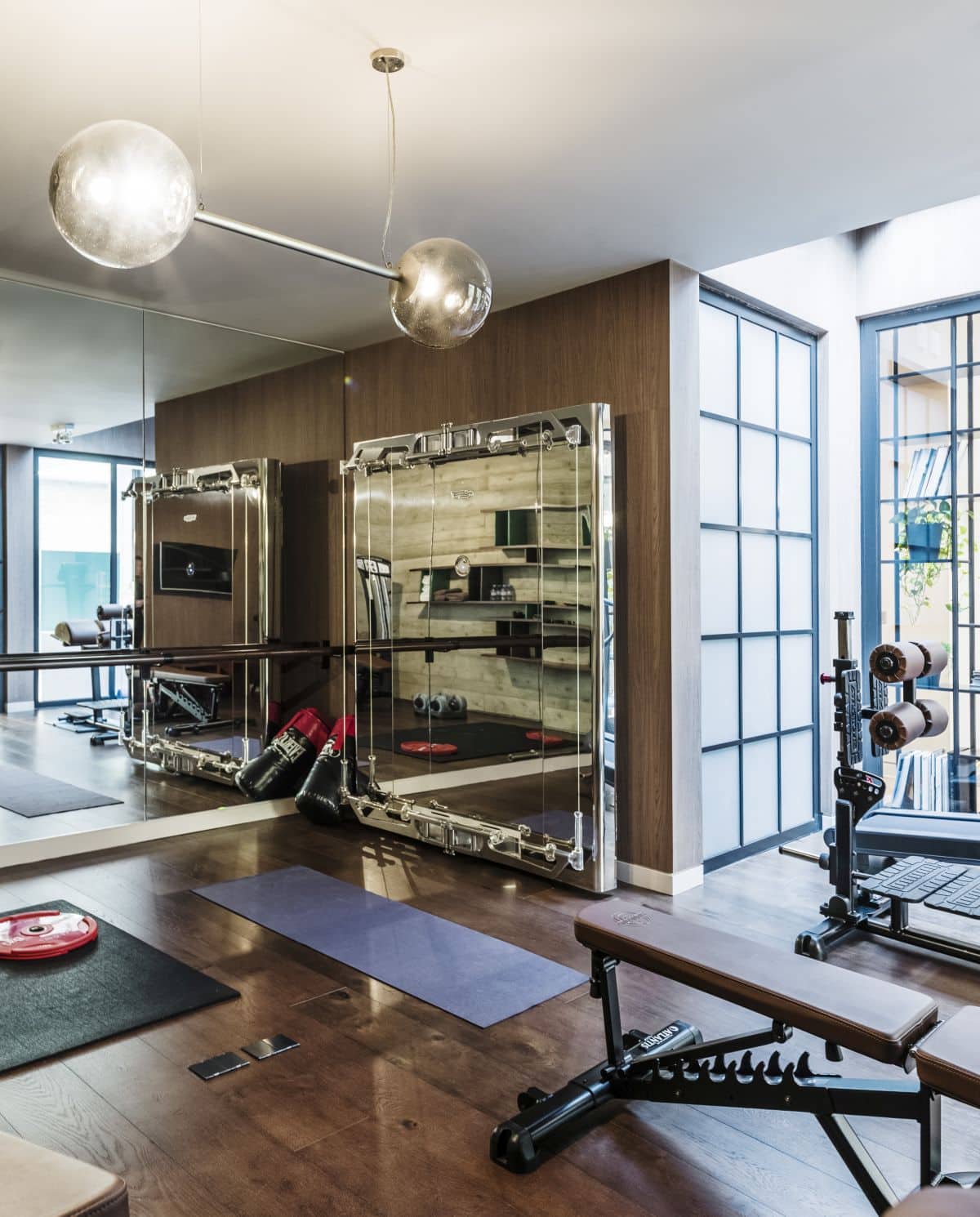
Ensuring Airflow and Acoustics
Proper ventilation and acoustics are essential for creating a comfortable workout environment. Install ceiling fans or invest in a good HVAC system to maintain optimal airflow. Additionally, consider soundproofing the room or incorporating acoustic panels to minimize noise disturbance and create a peaceful atmosphere.
Essential Amenities for Added Convenience
To make your home gym feel more like a complete retreat, add essential amenities such as a mini-fridge stocked with water or healthy snacks, a stereo system to play energizing music, and storage solutions to keep your equipment organized. These small touches can enhance your overall workout experience and make your home gym a space you look forward to spending time in.
July 18, 2023
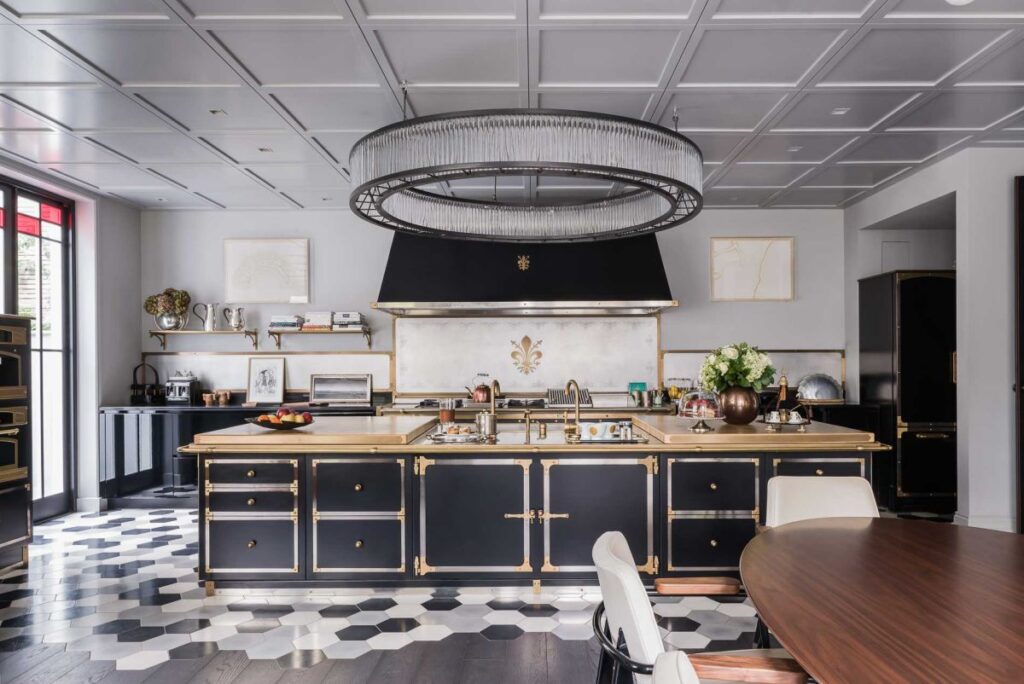
In recent years, the open concept kitchen has become increasingly popular in interior design. This innovative layout not only maximizes space but also fosters a sense of togetherness by eliminating barriers between the cooking and living areas. In this blog post, we will explore the benefits and strategies of creating a seamless flow in an open concept kitchen, where cooking and entertaining blend seamlessly.
Enhancing Communication and Social Interaction
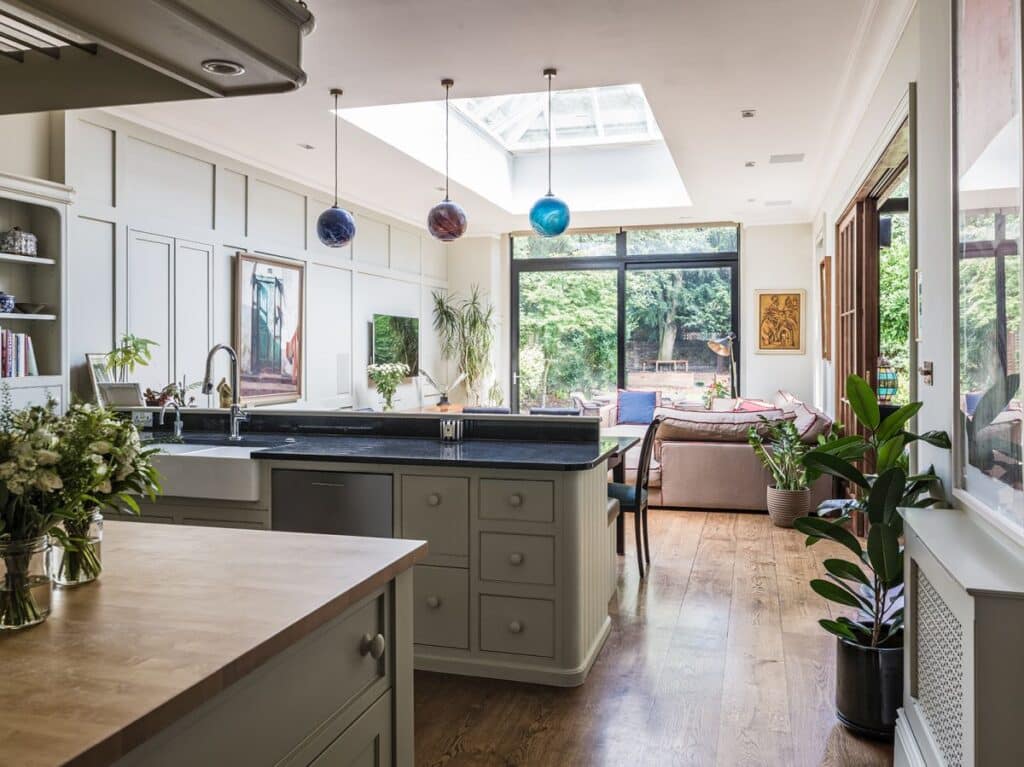
One of the main advantages of an open concept kitchen is the improved communication and social interaction it offers. With the absence of walls or doors, family members and guests can easily engage in conversations, whether they are relaxing in the living area or preparing a meal. This layout encourages a sense of togetherness and creates a more inclusive atmosphere for everyone.
Unifying Design Elements
To achieve a seamless flow, it is crucial to ensure that the design elements in both the cooking and living spaces complement each other. This can be achieved through the use of consistent color palettes, materials, and finishes. For example, incorporating similar cabinetry, flooring, or countertops in both areas can create a harmonious visual connection. Additionally, the strategic placement of furniture, lighting fixtures, and accessories can further enhance the cohesive feel of the space.
Thoughtful Space Planning
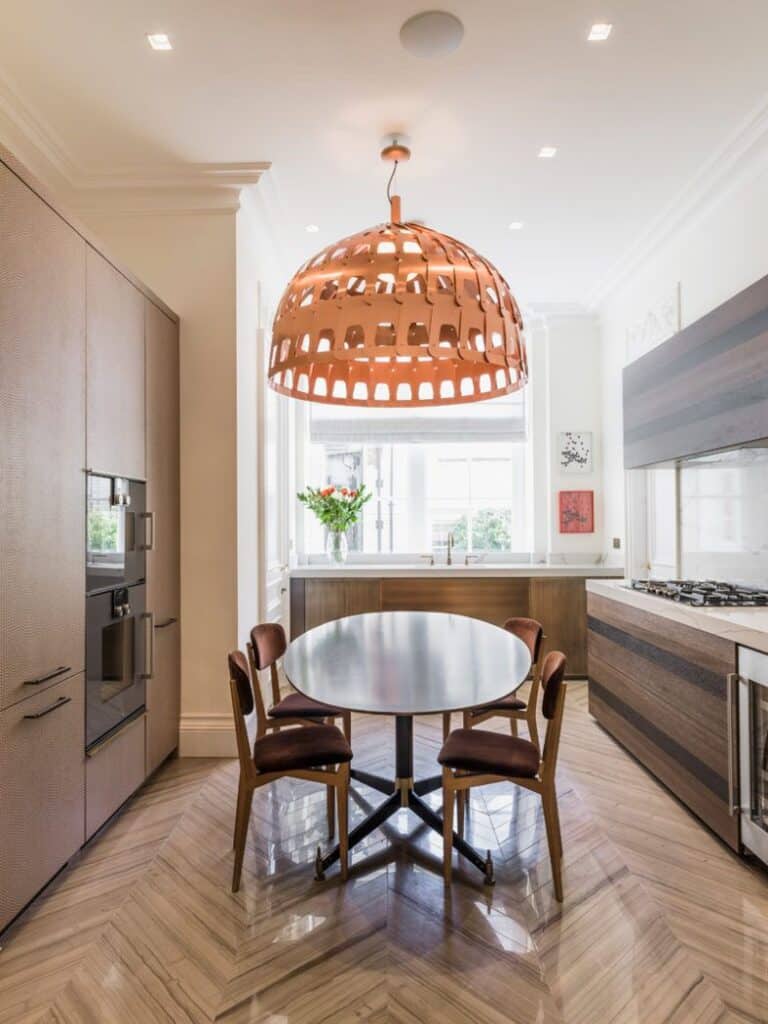
An open concept kitchen requires careful space planning to optimize functionality and flow. The layout should consider the placement of key elements such as the cooking range, sink, and refrigerator. It is important to ensure there is sufficient counter space and storage within easy reach. By arranging these elements in a logical and efficient manner, the kitchen becomes a practical workspace that seamlessly integrates with the living area.
Creating Zones
While an open concept kitchen connects the cooking and living spaces, it is essential to create distinct zones within the layout. Defining specific areas for cooking, dining, and lounging helps to maintain organization and purpose. This can be achieved through the use of furniture placement, lighting, or even architectural features like half-walls or columns. By clearly delineating these areas, the open concept kitchen becomes a cohesive yet functional space.
Balancing Acoustics
One potential challenge in open concept kitchens is managing sound and noise. The absence of walls can result in increased noise levels and echo. To mitigate this, it is important to consider acoustics when designing the space. Incorporating sound-absorbing materials such as rugs, curtains, or upholstered furniture can help reduce noise reflections and create a more comfortable environment for conversations and relaxation.
Incorporating Multi-functional Furniture
To further enhance the seamless flow between the cooking and living spaces, consider incorporating multi-functional furniture pieces. For example, an island with bar stools can serve as both a preparation area and a casual dining spot. Additionally, a sideboard or console table can provide storage and display space while doubling as a serving station during gatherings. These versatile furniture choices contribute to a flexible and integrated space.
July 11, 2023
India Design ID
The Saga of Modern Legacies
You can view the full article by following the link below.
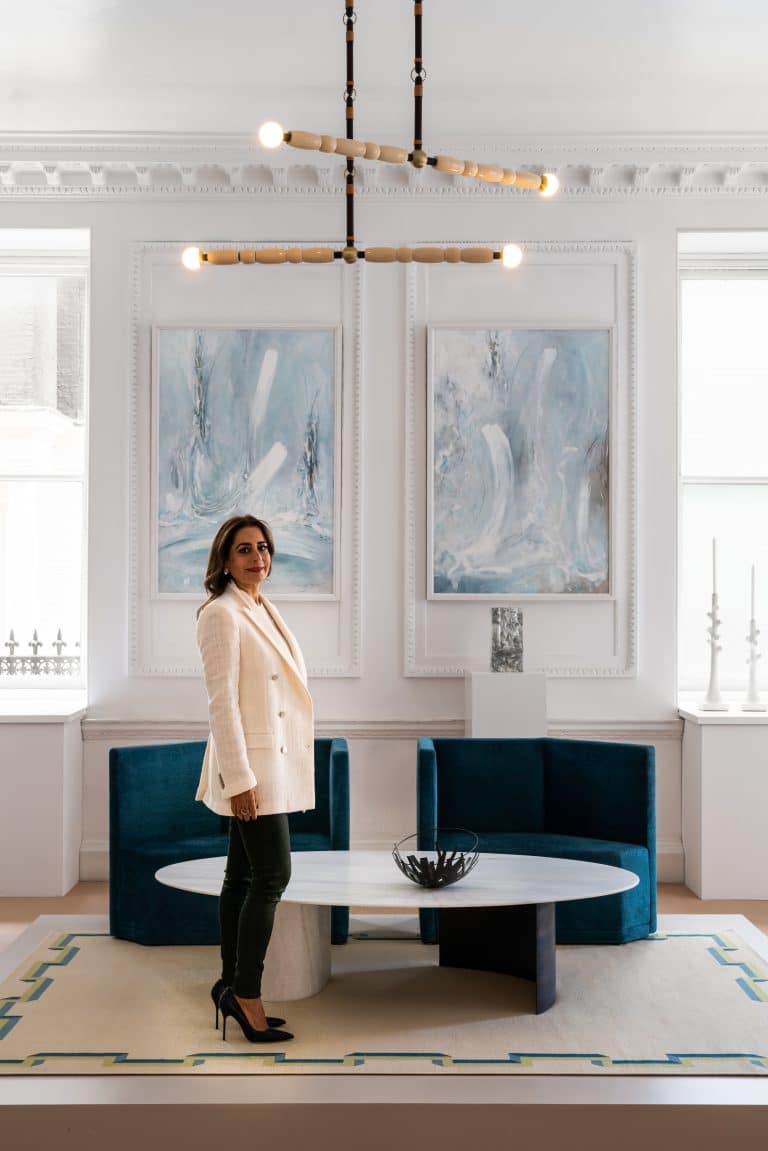
When it comes to interior design, many people focus on the walls, floors, and furniture, but often forget about the ceiling. However, the ceiling is the 5th wall in a room and can have a big impact on the overall look and feel of the space. One way to achieve a modern ceiling design is by using wall coverings.
Which Colour Is Best For Ceiling Design?
Traditionally, white has been the go-to color for ceilings. While white can create a clean and classic look, it's important to remember that it's not your only option. Wall coverings can add a pop of color, pattern, or texture to a room that has plain walls. This can be particularly effective in rooms with high ceilings, where the ceiling can often feel like a large, blank canvas.
How Do You Make An Interesting Ceiling?
Adding a textured wallpaper or paneling to your ceiling can instantly add depth and interest to the space. A textured wallpaper can create the illusion of a coffered or tray ceiling, adding architectural detail to the room. Alternatively, a paneling with a wood or stone texture can create a rustic or natural feel. These options are particularly effective in rooms with minimal decor, where the ceiling can become a focal point.
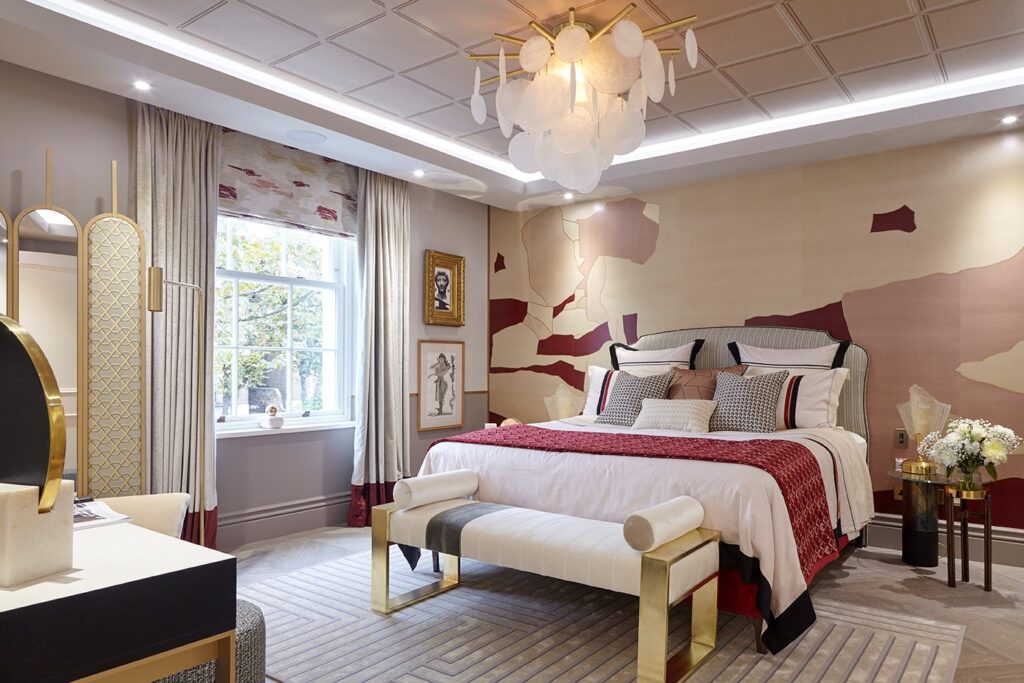
Define Your Space With Ceiling Coverings
In addition to adding visual interest, ceiling coverings can also help to define a space. For example, a bold geometric pattern on the ceiling in a dining room can help to create a sense of intimacy and make the space feel more inviting. If you have an open-concept living and dining area, using a different pattern or texture on the ceiling in each space can help to visually separate the areas.
Benefits Of Ceiling Coverings
Another benefit of ceiling coverings is that they can help to conceal imperfections. If your ceiling has cracks or stains, a textured wallpaper or paneling can help to disguise them and give the room a polished look. Additionally, a ceiling covering can help to absorb sound and improve the acoustics in a room.
Bold Ceiling Patterns
When choosing a ceiling covering, it's important to consider the overall style and color scheme of the room. A bold pattern or color may work well in a modern or eclectic space, but may clash with a more traditional or neutral room. It's also important to consider the height of the ceiling, as a busy pattern may overwhelm a low ceiling.
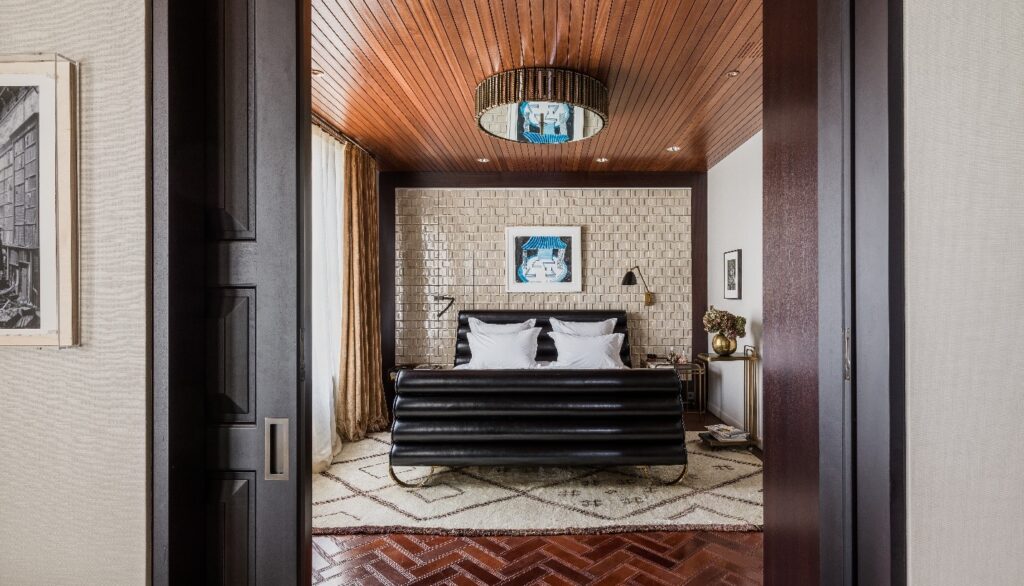
How Metallic Wallpapers Transform A Space
Metallic wallpapers have been gaining popularity in recent years as a way to add a touch of glamour to a space. A metallic wallpaper on the ceiling can create a luxurious feel, especially when paired with a chandelier or other statement lighting. This option is particularly effective in bedrooms or bathrooms, where you want to create a spa-like atmosphere.
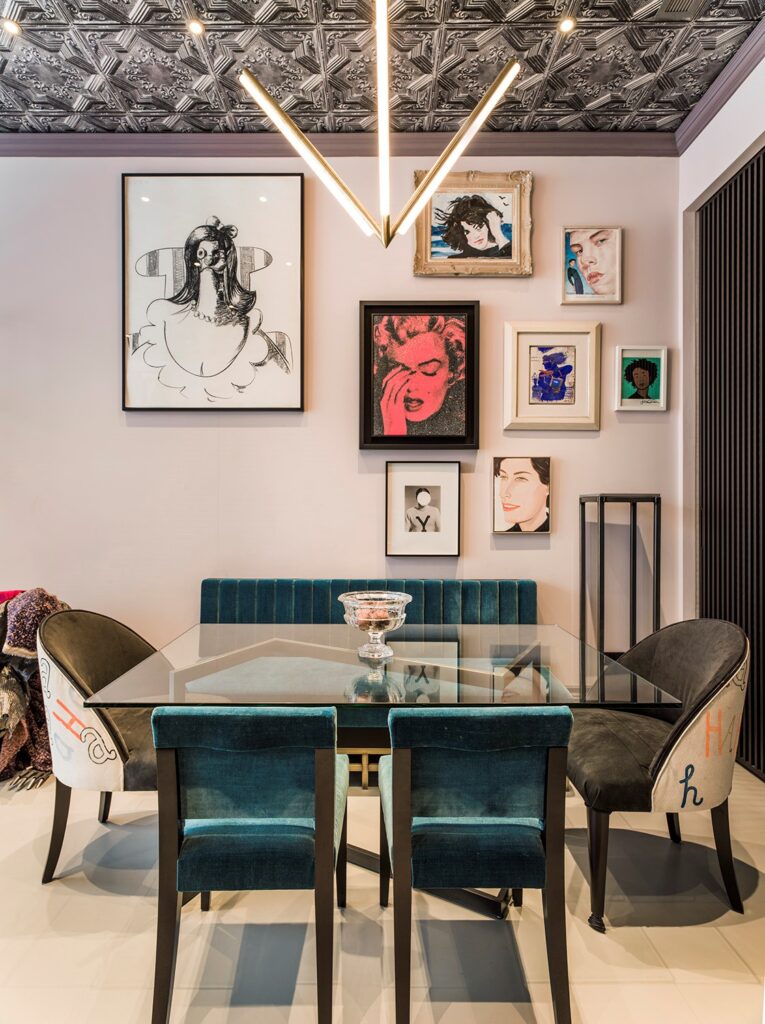
Why Are Wall Murals A Good Idea?
Wall murals are another way to create a unique and eye-catching ceiling. A mural can add a whimsical or artistic touch to the space, and can be particularly effective in a child's bedroom or playroom. The key to using a wall mural on the ceiling is to ensure that it doesn't overwhelm the space and that it works well with the overall decor.
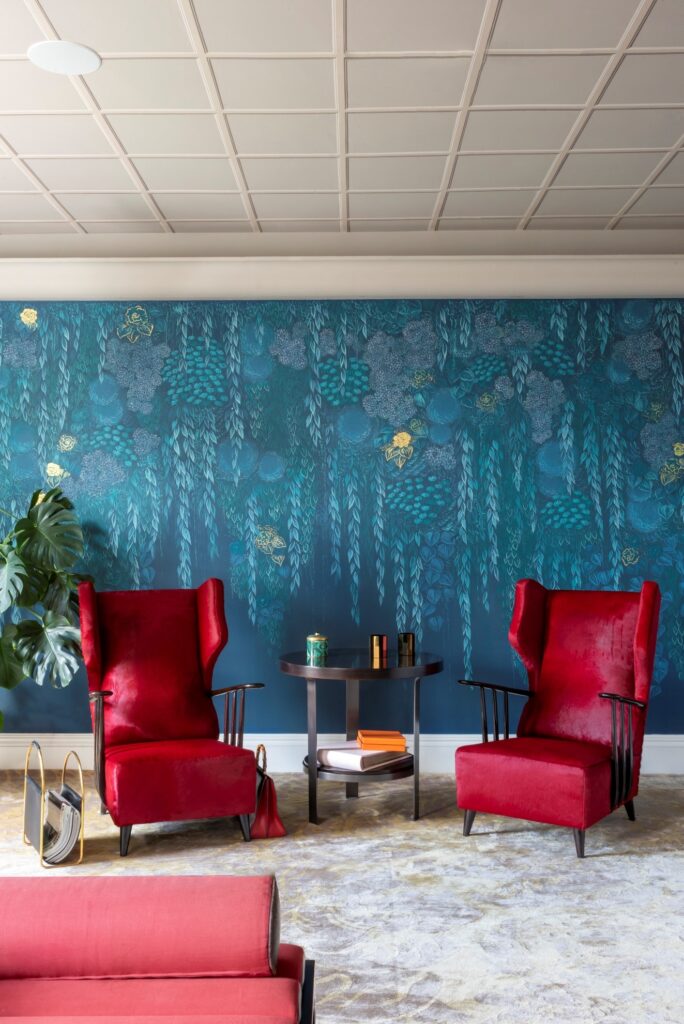
June 9, 2023
Architectural Digest India
Shalini Misra Gives This Victorian-Era London Home A Contemporary Makeover
You can view the full article by following the link below.

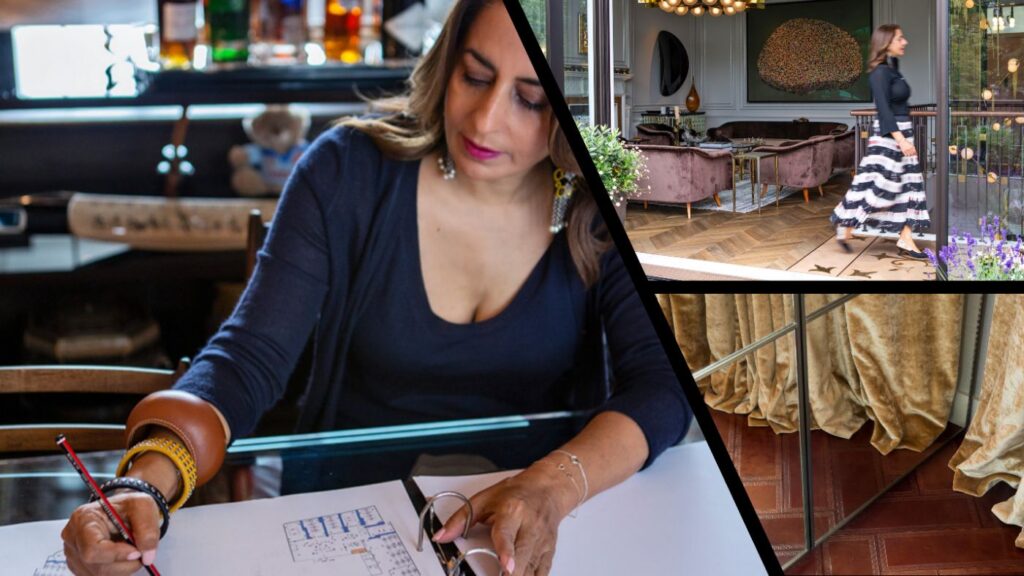
Introduction To Your Interior Designer, Team And Project
So, you have engaged an interior designer to design your dream home. Or you are ready to breathe new life into your living space? Maybe you've always had a vision for your home, but you just don't know how to execute it. That's where an interior designer comes in! An interior designer can help you bring your home to life and create a space that you love.
When you first engage with an interior design team, you'll be introduced to the key members who will be working on your project. This team will be your go-to for everything design-related, and they'll be with you every step of the way. They'll be there to answer any questions you may have, and they'll make sure that your project stays on track.
Interior Design Preferences
At your first meeting, you'll be asked about your likes and dislikes and the design aesthetic you prefer. It's important to have an idea of what you want before you meet with your designer. Think about your favorite places, your influences, and the hotels you love. Even things like washrooms with great designs can give you an idea of what you like. What feel do you want for your home, and what journey do you wish to experience when travelling through our home.
Some clients may struggle with expressing their ideas, but don't worry if this is you. Your designer will have ways of extracting this information through time, examples, vision boards, and questionnaires. They'll work with you to create a design that reflects your personality and style.
Your Furniture, Art And Accessory Inventory
Your designer will also take a look at your current inventory of furniture and possessions. They'll meet with you to discuss what items can be kept and which pieces can be "reinvented" by moving them to different locations or by making minor modifications. For example, a sofa may be reupholstered to fit the new design style, or a coffee table may be refinished to match the new colour scheme.
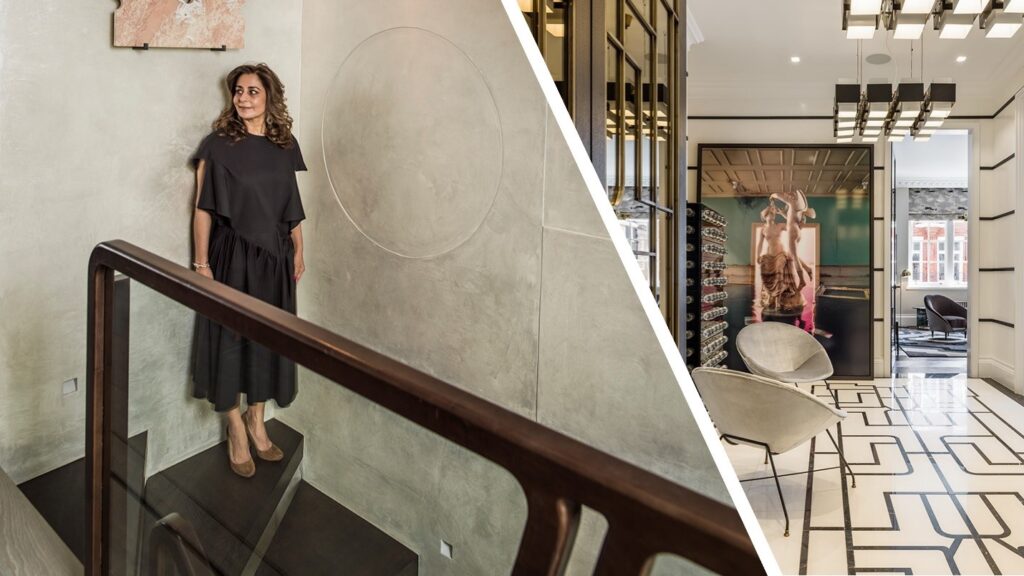
How Your Lifestyle Defines Your Design
During your first meeting, you'll also discuss the aesthetic of the space with your designer. They'll ask you questions about your lifestyle, such as how much entertaining you do and the number of guests you typically host. This information will help the designer determine how much crockery, chairs, tableware, cocktail glasses, and barware will be needed. (This applies to every space of your home)
You can expect to discuss a range of topics that will help them understand your vision and preferences for your home. One of the areas that your designer might look at is how to utilise small areas and unused rooms in your home. For example, they might ask if you want to create a gym, study, reading nook, extra storage, walk-in wardrobe, extra bedroom for guests, kids playroom, prayer room, or extra washroom.
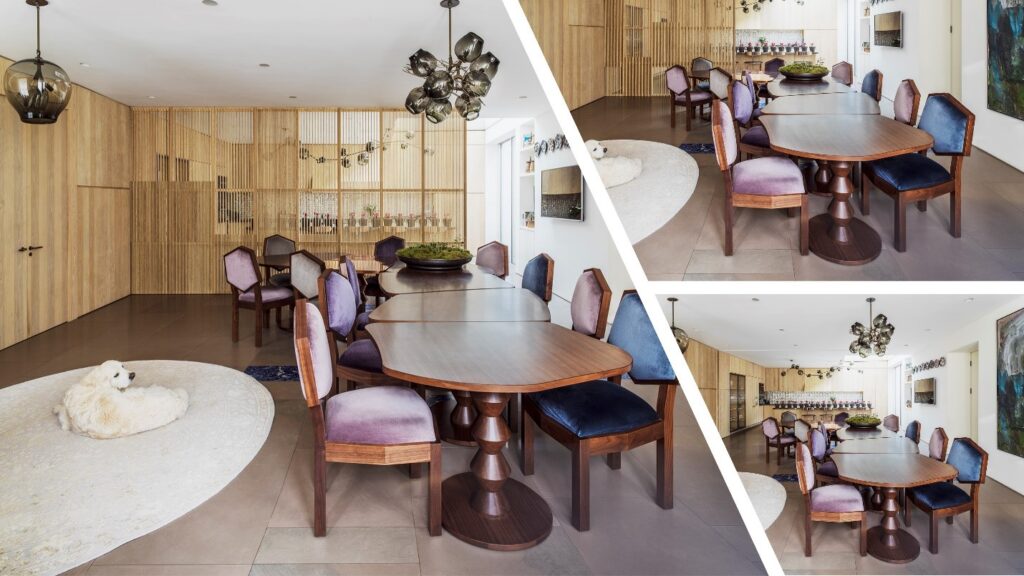
Flexible Spaces
Creating flexible spaces is another topic that your designer might discuss with you. This involves designing spaces that can be used for multiple purposes, such as a living room that can also serve as a home office or a dining room that can be transformed into a space for entertaining guests.
We love using sliding walls and screens to compartmentalize spaces in various ways. They create private spaces within an open floor plan, separate spaces without creating a permanent wall, add texture to space, and enhance natural lighting. However, when using sliding walls and screens in interior design, it is essential to ensure functionality, consider the space, create balance, and choose the right material. By following these rules, interior designers can create unique and functional spaces that meet the needs of their clients.
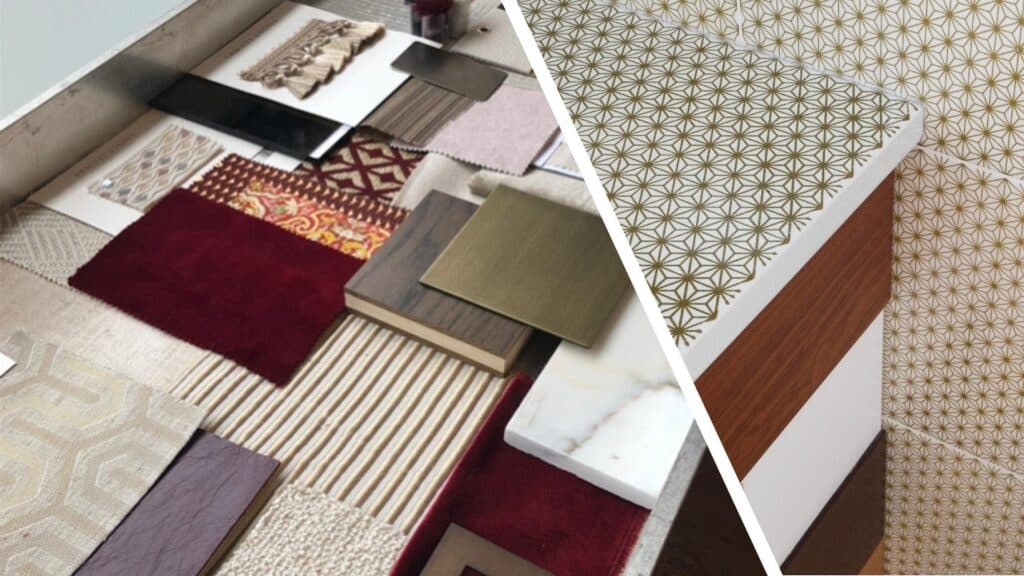
How To Visualize Interior Design
To help you visualise the design ideas that your designer has in mind, they may use Pinterest boards. This allows you to see images of different design elements, such as furniture, lighting, and decor, and how they might work together in your space.
Your designer may also show you examples of their previous projects and ask you to point out any standout moments or elements that you like. This will help them get a better understanding of your design preferences and style.
If your designer is sourcing pieces, lighting, or art for you, they will spend time finding out any artists, designers, or makers that you love. With their extensive knowledge and relationships in the industry, they can source unique and beautiful pieces that fit your style and budget.
Your first meeting with an interior designer will involve a lot of discussion about your preferences, vision, and goals for your home. By understanding your needs and style, your designer can create a unique and personalised design that reflects your personality and lifestyle.
May 25, 2023
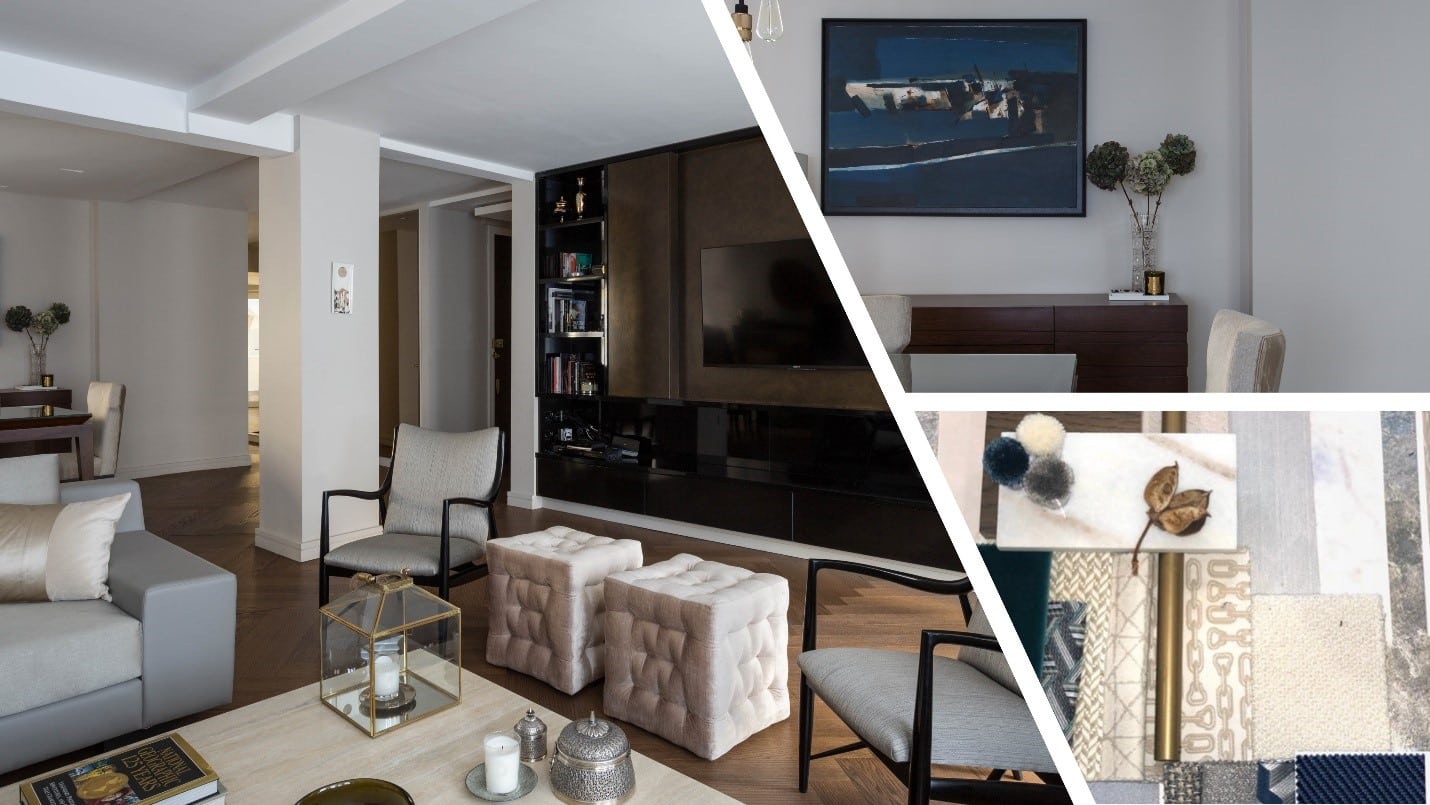
The first step in designing the interior of your house is to visualise the space you want to decorate. Think about the style and atmosphere you want to create, and what you want to achieve with your design. It’s important to consider the practical aspects of your space, such as the size and layout of the room. Once you have a clear idea of what you want, it’s time to start gathering inspiration.
How To Get Interior Design Inspiration
When looking for interior design inspiration, we start by searching for images that match the style you want to achieve. Look for colours, furniture pieces, heritage and influences, and materials that appeal to you. Pinterest is a great platform to search for inspiration, as you can easily save and organise images into different boards.
It’s important to keep your options open and not limit yourself to one style. You can mix and match different styles to create a unique and personalised design. Look for images that catch your eye and create a mood board of different styles, colours and textures.
We encourage working with your current inventory of furniture in a number of ways to create a cohesive and harmonious design.
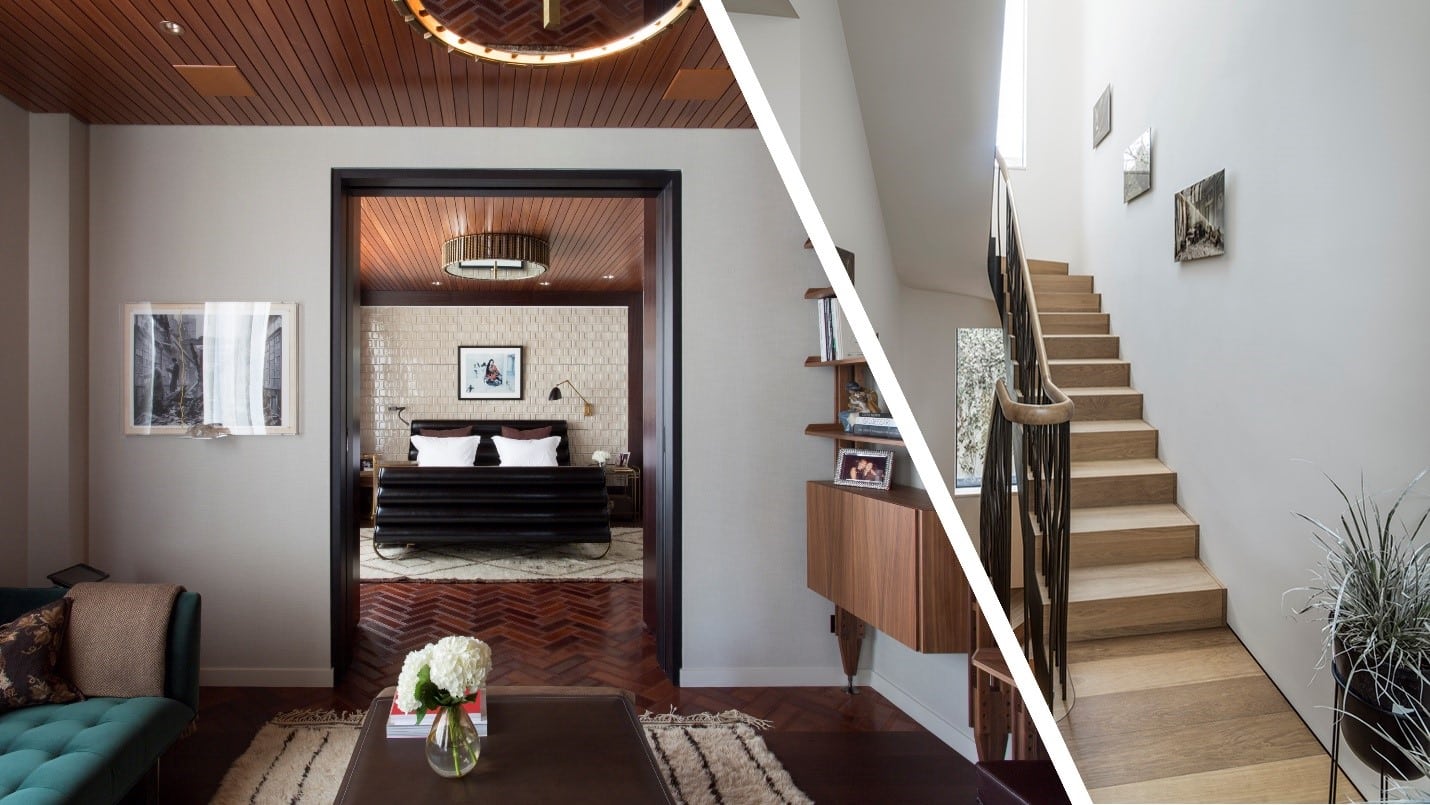
Here Are Some Ways That We Can Use Existing Furniture Pieces
Repurpose furniture
An experienced interior designer can repurpose furniture to create a new function or purpose in a room. For example, they can turn an old dresser into a TV stand or a bookshelf into a bar.
Upcycle furniture
Upcycling is the process of taking old or discarded items and transforming them into something new and useful. We strive to upcycle furniture pieces by painting, reupholstering, or adding new hardware to give them a fresh new look.
Mix
and match
Mixing and matching furniture styles can create an eclectic and unique look in a room. Designers can mix and match your existing furniture with new pieces to create a cohesive look that reflects your personal style.
Create a
focal point
We try to use existing furniture pieces to create a focal point in a room. For example, they can use a statement piece of furniture, such as a bold sofa or a unique coffee table, as the focal point of the room.
Space
planning
We love to use your existing furniture to create a functional and aesthetically pleasing space. We help to arrange your furniture in a way that maximizes the use of space and creates a comfortable and inviting atmosphere.

Connecting With A Piece Of Furniture
When searching for furniture pieces, it’s important to look for pieces that you connect with. You should feel a sense of excitement and joy when you see a piece of furniture that you love. It’s important to consider the practical aspects of the piece, such as its size and functionality, but also consider how it makes you feel. Never keep a piece that doesn’t fit your overall design aesthetic, I know its hard to part with items but a large looming piece that doesn’t fit or work will demand all the attention and destroy the feel of the space. Either factor it in from the get or part ways.
Please take a moment to read our blog post on visualising design.
Connecting with a piece of furniture is an essential part of the design process. When I look at a piece of furniture, I try to understand its history, its style, and the emotions it evokes. I believe that every piece of furniture has a story to tell, and it’s my job to find a way to incorporate that story into the design. By connecting with a piece of furniture, I can create a space that is not only aesthetically pleasing but also meaningful and personal to my clients.
Imagine Yourself Within A Space
When creating an interior design board on Pinterest, it’s important to imagine yourself within the space. Think about how you want to feel when you enter the room, and what activities you will be doing in the space. This will help you to create a design that is both functional and aesthetically pleasing.
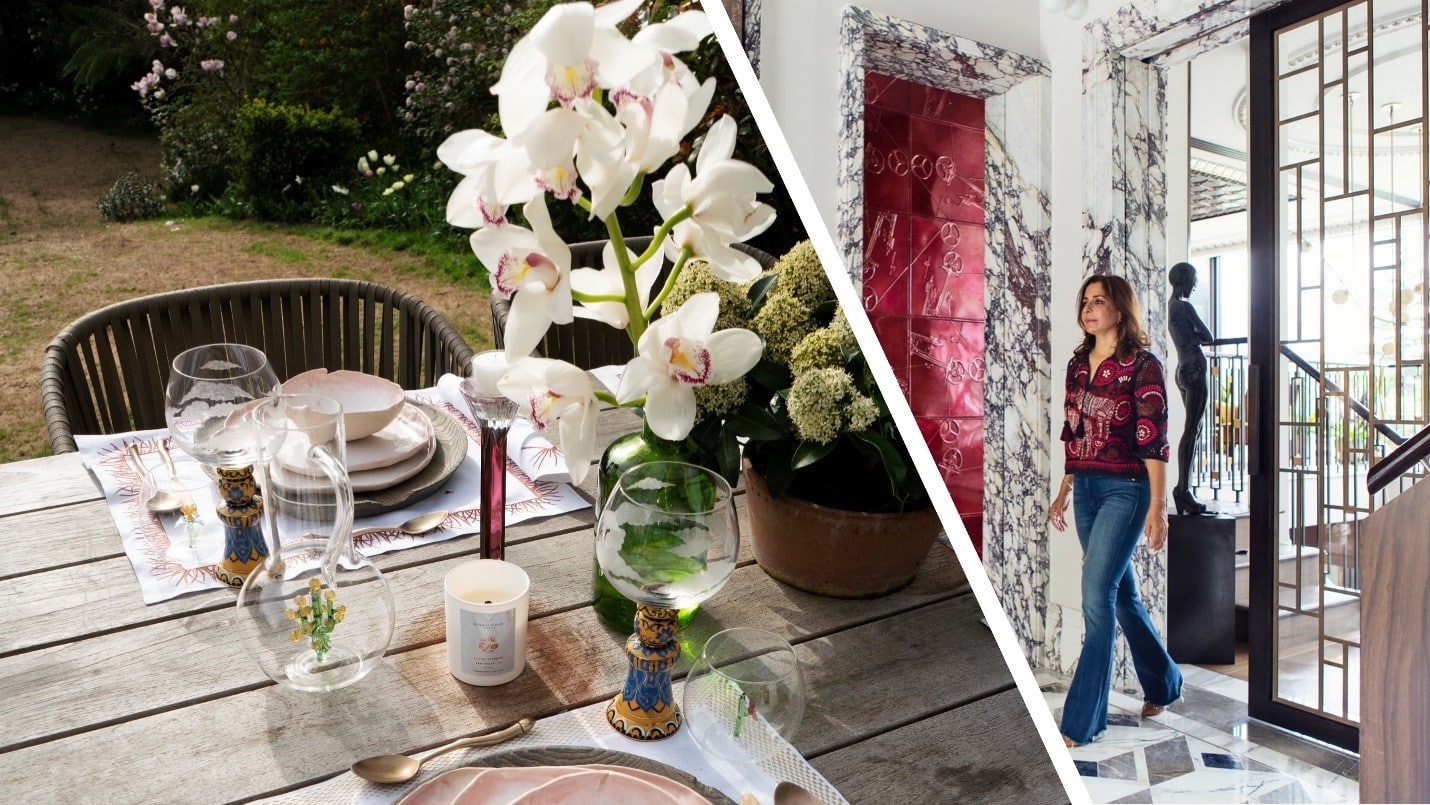
Exercises To Help You Visualise What You Want
If you’re having trouble visualising your design, there are exercises you can do to help you. One exercise is to create a vision board of images that inspire you. This can include images of colours, textures, furniture pieces, and accessories.
Another exercise is to create a list of adjectives that describe the atmosphere you want to create in the space. This can include words such as cosy, luxurious, modern, or rustic. This list will help you to stay focused on your design goals and create a cohesive design.
In conclusion, creating an interior design mood board on Pinterest is a great way to visualise your design ideas and bring your vision to life. By following these tips, you can create a board that is both practical and aesthetically pleasing. Remember to keep your options open and to connect with pieces that bring you joy.
May 19, 2023
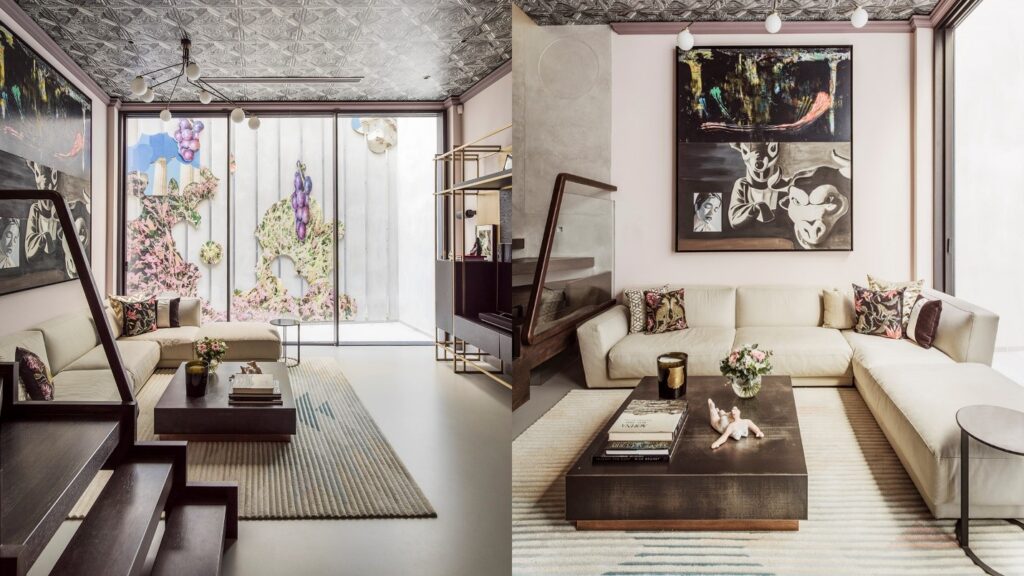
When you're looking for ideas to design a space for a small room first, consider the size of the room. If the room is very small, a dark or bold ceiling colour may make it feel even smaller. In this case, it's best to stick with a light and neutral colour to help maximize the space.
You can experiment with bolder colours for the ceiling. A darker shade can create a cozy and intimate atmosphere, while a brighter shade can add energy and vibrancy.
Next, think about the overall colour scheme of the room. You want the ceiling colour to complement the walls and other decor elements, rather than clash with them.
If you're not sure which colour to choose, consider using a shade that's a few shades lighter or darker than the wall colour. This creates a subtle contrast and adds depth to the room without being too overpowering.
Finally, remember that the ceiling is often overlooked in room design, but it can have a big impact on the overall look and feel of a space. Don't be afraid to experiment with different colours and finishes to create a unique and personalized look.
Reflective Surfaces
One of the easiest and most effective ways to make a small room feel larger is by incorporating reflective surfaces into your décor. Mirrors, glass, and metallic accents can all help to bounce light around the room.
Consider adding a large mirror or a metallic wallpaper to one wall to reflect light and make the room feel brighter. If you have a window, consider opening up the wall with a glass window and incorporating a wall art installation on the outside. You can also incorporate glass or mirrored furniture, such as a coffee table or side table, to add a touch of glamour and make the room feel more spacious.
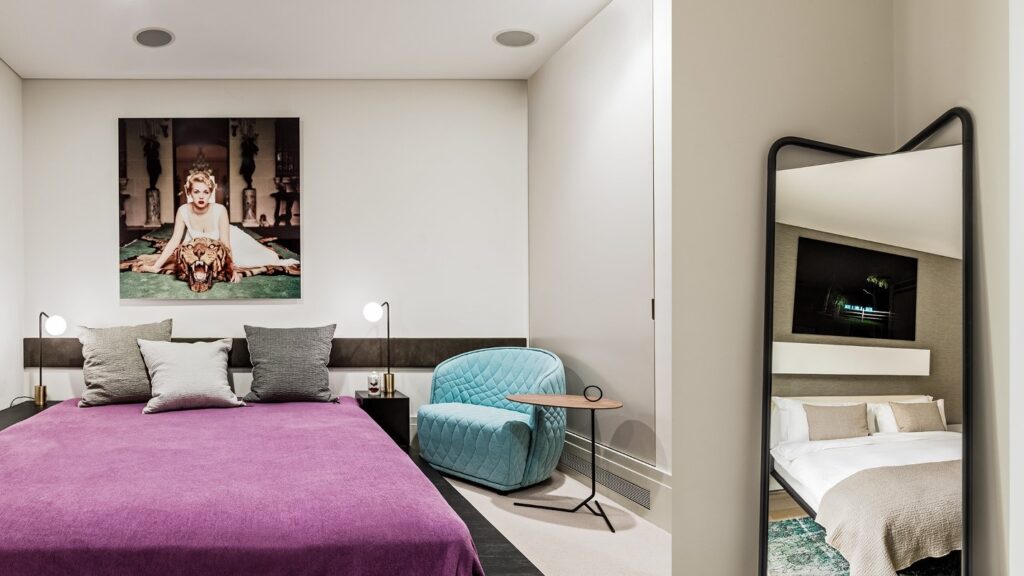
Small Bedroom Design Ideas
When setting up a small bedroom, it's important to choose furniture that doesn't take up too much visual space. Low profile furniture, such as a platform bed or a low dresser, can help create a sense of openness and make the room feel less cluttered.
Instead of a headboard, consider adding a simple feature on the back wall, such as a statement wallpaper, a small lateral board or a piece of artwork. This can add visual interest to the room without taking up valuable space.
When it comes to lighting, avoid drop lighting or large chandeliers, which can make the ceiling feel lower and the room feel smaller. Instead, opt for wall-mounted or bedside lamps to create a cozy and intimate atmosphere.
Adding pops of color can also help liven up a small bedroom. Consider using colorful accent pillows or a bright area rug to add interest and personality to the space. Just be sure to keep the overall color scheme simple and cohesive to avoid overwhelming the room.
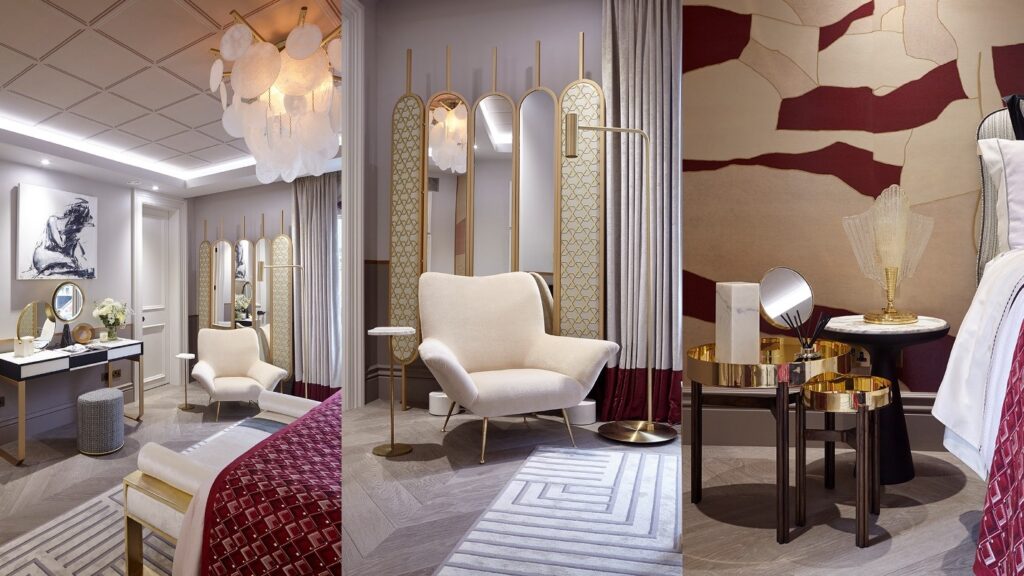
Tips On Accessorizing A Small Room
Follow these simple ideas when designing a small room:
Use mirrors
Mirrors can help create the illusion of more space and reflect light to brighten up the room. Hang a large mirror on one wall or use smaller mirrors as accents.
Choose the right size furniture
Make sure your furniture is proportional to the size of the room. Don't overwhelm the space with large pieces that take up too much floor space.
Add plants
Plants can add life and color to a small room. Choose plants that don't take up too much space, such as succulents or small potted herbs.
Use wall art
Hang a statement piece of art on the wall to add visual interest and draw the eye up. A gallery wall of smaller pieces can also work well in a small room.
Incorporate functional storage
Use decorative baskets or boxes to store items and keep the room clutter-free. A storage ottoman or bench can also provide extra seating and storage.
Choose a color scheme
Stick to a cohesive color scheme to create a sense of unity in the room. Use pops of color in your accessories to add interest and personality.
Don't overcrowd
Avoid cluttering the room with too many accessories. Keep it simple and choose a few key pieces that make a statement.
How To Create A Snug Room From A Small Room
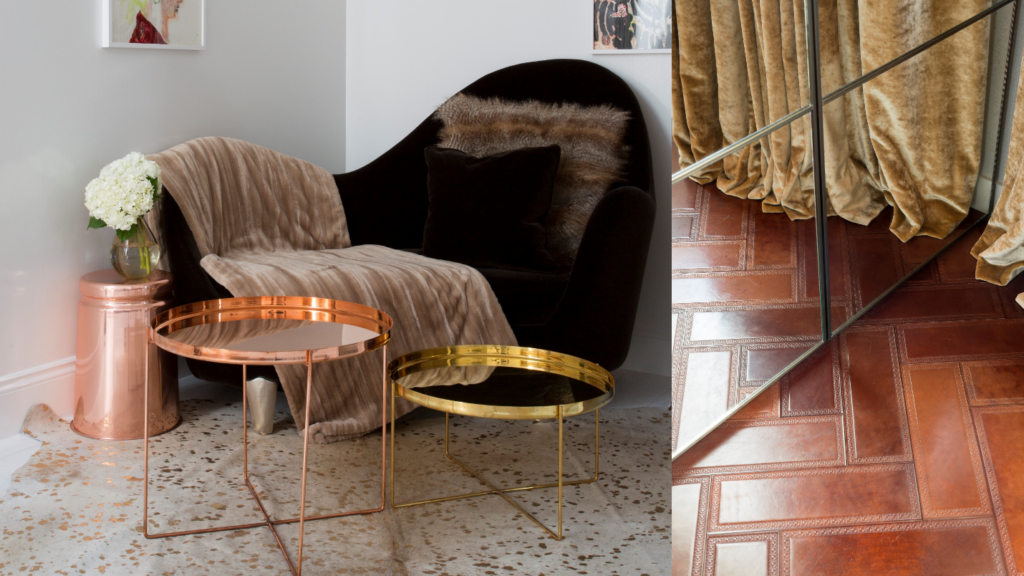
Colours that work (and colours to avoid)
Choosing the right colours is essential when decorating a small room. Light, neutral colours are best, as they reflect light and make the room feel brighter and more open. White, beige, and light grey are all excellent choices for walls and ceilings.
When it comes to accent colours, choose one or two colours that complement each other and stick to a simple colour scheme. Avoid using too many different colours or bold patterns, as these can make the room feel cluttered and overwhelming.
Dark colours should be avoided in small rooms, as they can make the space feel smaller and more enclosed. If you do want to incorporate darker colours, use them sparingly as accents or in small doses.
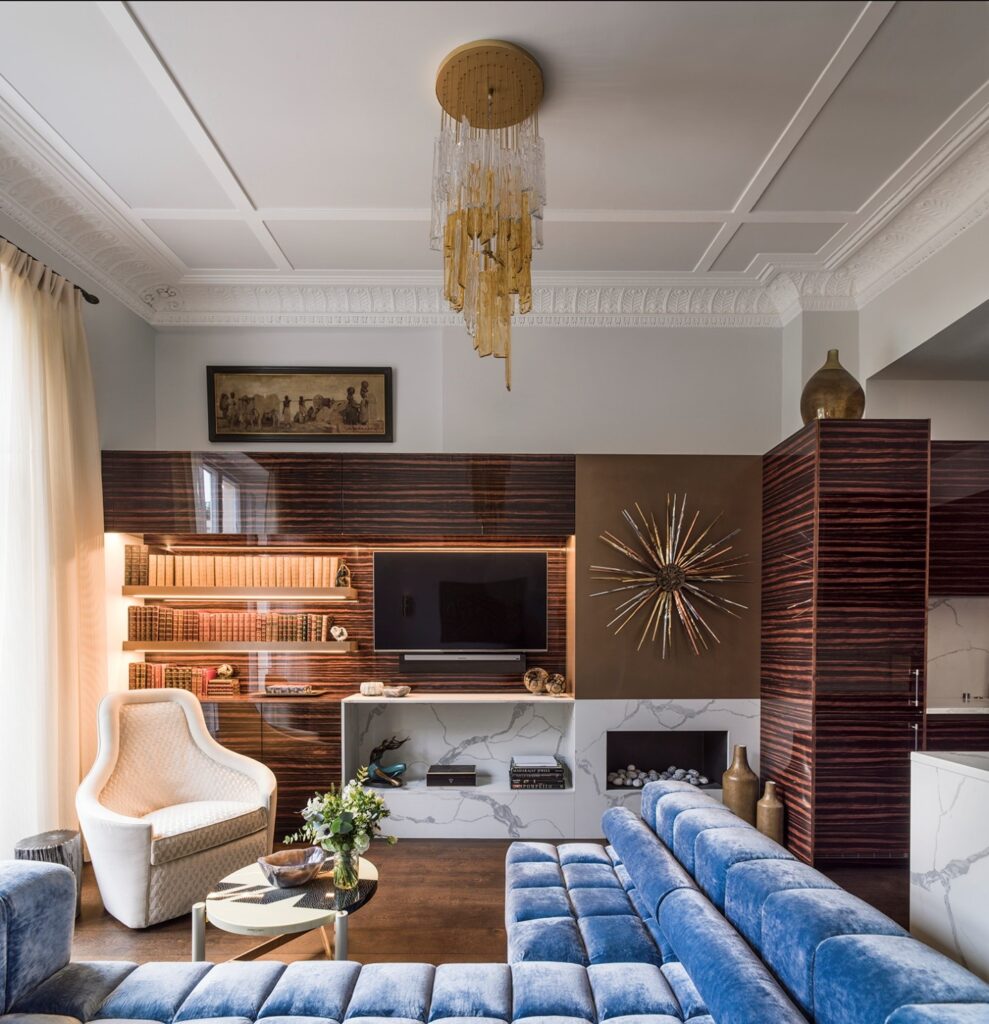
Never Forget A Small Room In A Large House
If you have a large house, it can be tempting to focus all of your attention on the larger rooms and neglect the smaller ones. However, small rooms can be just as important and deserve just as much attention. The example above of this sitting area is open planned and incorporates the kitchen to the right and the main living room leads from this area.
By decorating your small rooms with care and attention to detail, you can create a cohesive and harmonious look throughout your entire home. Consider incorporating the same colour scheme for wall finishes and opt for pops of colour or design elements from your larger rooms into your smaller ones to create a sense of continuity and flow.
May 15, 2023
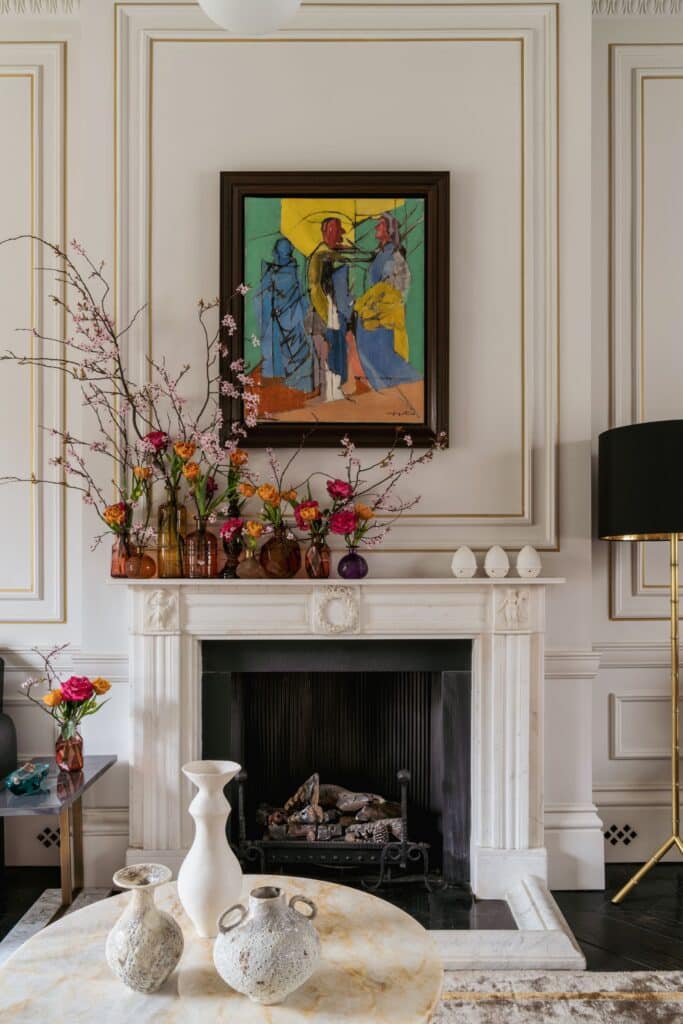
When it comes to selling your home, first impressions are everything. You want potential buyers to walk in and immediately feel at home, envisioning themselves living in the space. This is where interior design, home styling, and staging come in. By strategically designing and decorating your home, you can make it more appealing to buyers and increase your chances of a quick sale. Here are some tips to get you started.
Entrance and First Impressions
The entrance to your home is the first thing potential buyers will see, so it's essential to make it welcoming and inviting. Start by decluttering the area and making sure it's well lit. Add a rug or a welcome mat to make the space feel homier. You could also consider adding a potted plant or some fresh flowers to add some colour and life to the space.
Colours to Use and Colours to Avoid
When it comes to colour, neutral tones are the safest bet when it comes to staging your home. Shades of white, beige, and grey are timeless and create a blank canvas for potential buyers to envision themselves living in the space. However, don't be afraid to add pops of colour here and there to add some interest and personality to the space. Just be sure to keep it subtle and cohesive.
On the other hand, there are some colours you should avoid when staging your home. Bold, bright colours can be overwhelming and distracting, so it's best to steer clear of them. Additionally, overly dark colours can make a room feel smaller and cramped, so it's best to stick to lighter hues.
How to Style Accessories
Accessories are a great way to add personality and interest to a space. When it comes to staging your home, it's important to strike a balance between too little and too much. Too many accessories can make a space feel cluttered and overwhelming, while too few can make it feel sterile and uninviting.
Start by selecting a few key accessories that help to tie the room together. This could be a piece of artwork, a decorative vase, or a statement lamp. Try to choose items that are cohesive in style and colour to create a cohesive look.
How to Make Rooms Look Larger and Less Cluttered
One of the biggest challenges when staging a home is making it look as spacious and open as possible. Here are some tips to help you achieve this.
Remove excess furniture
Too much furniture can make a room feel cramped and cluttered. Remove any pieces that aren't essential to the function of the room.
Use mirrors
Mirrors are a great way to create the illusion of more space. Place a mirror opposite a window to bounce natural light around the room and make it feel brighter and more open.
Keep it simple
When it comes to staging a home, less is more. Stick to simple, streamlined furnishings and accessories to create a clean, uncluttered look.
Front Door Colour: The First Impression
The first thing potential buyers will see when they visit your home is your front door. It’s important to make a good first impression, and choosing the right front door colour can help you do that. According to a study by Zillow, homes with black or charcoal grey front doors sell for $6,271 more on average than homes with white front doors. Other popular front door colours that sell well include navy blue, dark grey, and red.
How to Use Lighting
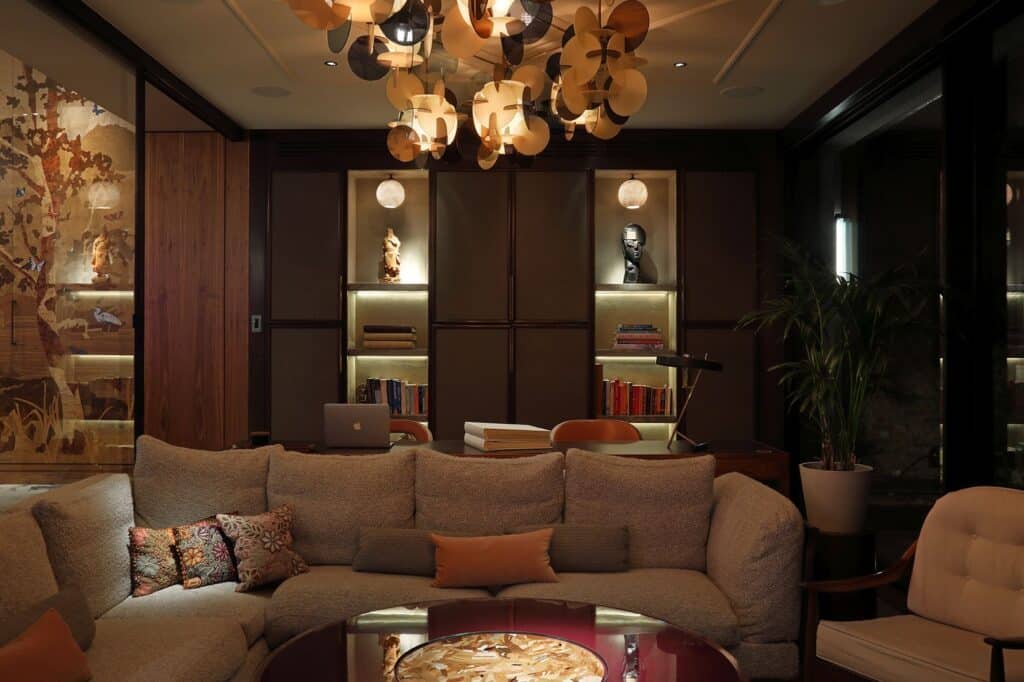
Lighting is another key element of staging your home. Natural light is always the best option, so be sure to open curtains and blinds to let as much light in as possible. If your home doesn't have a lot of natural light, consider adding some lamps to create a warm, inviting glow.
When it comes to selecting light fixtures, choose ones that are simple and timeless. Avoid overly ornate or trendy fixtures that could turn potential buyers off.
How to Use Mirrors to Bounce Light
As mentioned earlier, mirrors are a great way to bounce light around a room and make it feel more spacious. Here are some tips for using mirrors effectively:
- Place mirrors opposite windows to reflect natural light.
- Use mirrored furniture, such as a mirrored coffee table or console table, to add a touch of glamour and help bounce light around the room.
- Hang a large mirror on a blank
Storage Ideas: Show Off Your Space
Storage is a big concern for many homebuyers, so it’s important to show off your storage space when you’re selling your home. Here are a few storage ideas to help you do that.
Built-in storage
Built-in shelves or cabinets can be a great selling point for your home. They not only provide ample storage space but also add to the overall aesthetic of the room.
Closet organizers
A well-organized closet can make a big difference in how buyers perceive your home. Consider investing in closet organizers to maximize your closet space and show off how much storage your home has to offer.
Floating shelves
Floating shelves are a great way to add storage space without taking up floor space. Use them to display decorative items or to store everyday items like books or kitchen supplies.
Dressing Your Bedroom: Create a Relaxing Space
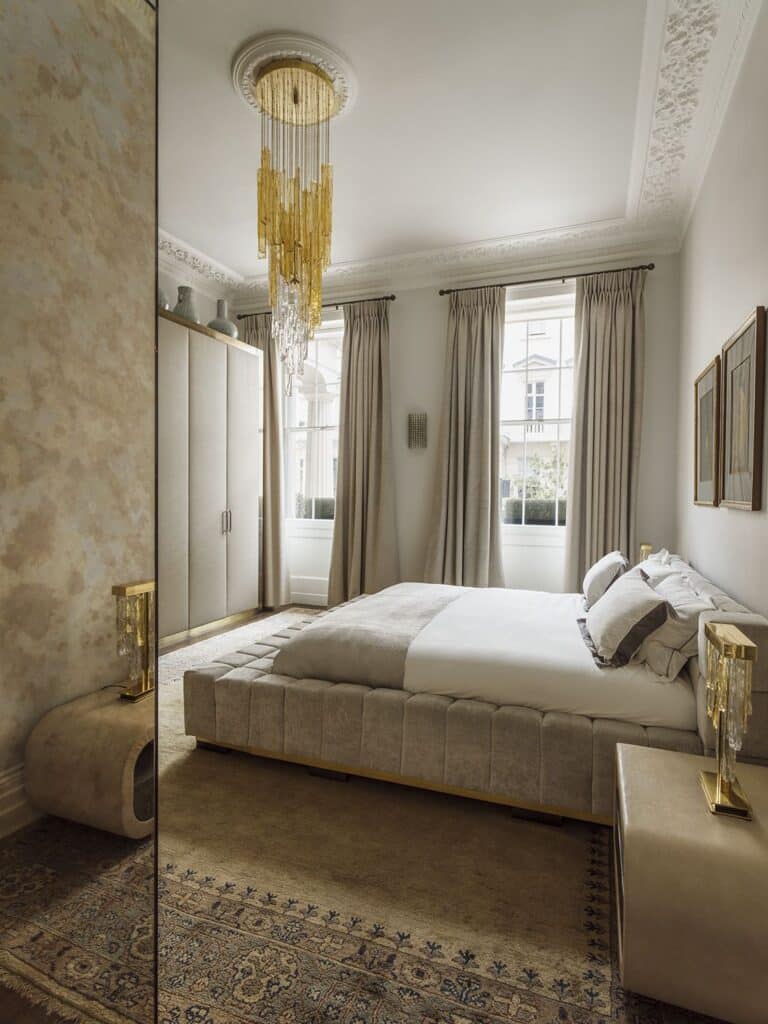
The bedroom is one of the most important rooms in the home, and it’s important to create a relaxing space that potential buyers will love. Here are a few tips for dressing your bedroom to sell your home.
Neutral colours
Use neutral colours like beige or grey for your bedding and curtains. These colours create a calming atmosphere and allow buyers to envision their own decor in the space.
Add texture
Adding texture to your bedding and pillows can make your bedroom feel cosier and inviting. Consider adding a soft throw or a few decorative pillows to your bed.
Remove personal items: When you’re selling your home, it’s important to remove personal items like family photos or personal knick-knacks. This allows potential buyers to envision themselves living in the space.
Items to Include in Your Living Area: Make it Inviting
The living area is where potential buyers will spend a lot of their time, so it’s important to make it inviting and comfortable. Here are a few items to include in your living area to help you sell your home.
Area rug
An area rug can help define your living space and make it feel cosier. Choose a rug that’s the right size for your space and complements your existing decor.
Decorative pillows
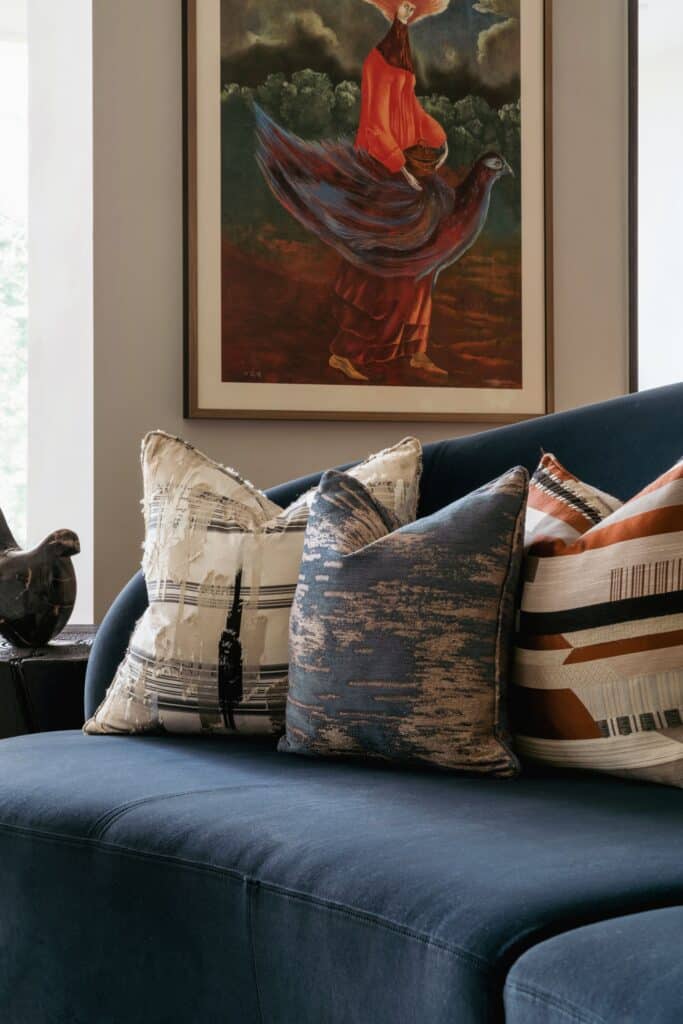
Decorative cushions can add colour and texture to your living room furniture. Choose cushions that complement your existing colour scheme and add a pop of colour to your space.
Plants
Adding plants to your living space can make it feel more inviting and bring a bit of the outdoors inside. Choose plants that are easy to care for and complement your existing decor.
Accentuating Views to Your Garden: Highlight Your Outdoor Space
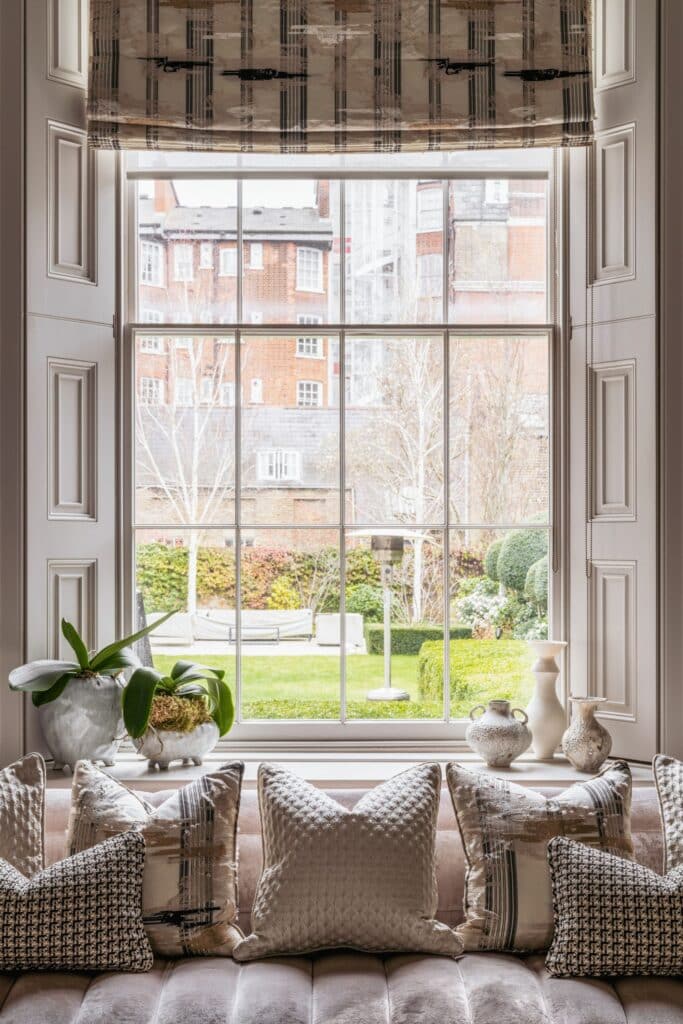
If you have a garden or outdoor space, it’s important to highlight it when you’re selling your home. Here are a few tips for accentuating views to your garden.
Use window treatments
If you have a great view of your garden from your living space, consider using window treatments like curtains or blinds to frame the view.
Add outdoor furniture
Adding outdoor furniture to your garden can make it feel like an extension.
May 3, 2023
As we head into Spring 2023, there are several interior design trends that are taking the living room world by storm. From the use of natural materials to bold color choices, here are some of the top living room trends for right now:
Velvets and Pastels
Mixing and matching different pastel tones, art and lighting can add a sense of playfulness and personality to your living room. From plush velvets, silk to embroidered blinds, light coloured glass and heavy steel ironmongery. Don’t be afraid to mix and match different patterns and materials to create a unique and eclectic space.
From experience as an interior designer for many years and taking into considering the current economic situation. I believe that a screen at the entrance of your home can be a great solution to provide privacy and security from random callers, strangers, multiple delivery drivers and postmen accessing view to your home. Screens are very versatile and can serve as both functional and decorative elements in your interior design.
From a functional perspective, a screen can be an effective way to block the view of your home from anyone standing at your entrance. This can be especially important if you have large windows or glass doors that make it easy for outsiders to see inside. With a screen in place, you can create a sense of separation between your entrance and the rest of your home, providing a greater sense of privacy and security.
In addition to providing privacy and security, a screen can also be a stylish and decorative element in your interior design. Screens come in a variety of styles and materials, from sleek modern designs to more traditional wooden screens with intricate carvings. e cater to a wide range of clients and privacy needs and pride ourselves as expertise in this field. By selecting a screen that complements your existing decor, religious and privacy needs you can create a cohesive and stylish look in your home.
Additionally, consider the style, size and material of the screen to ensure that it complements your existing decor and enhances the overall aesthetic of your space.
Bold Colours
While neutrals have long been a staple in interior design, bold accents and vibrant colour spills of furniture and accessory accents are becoming increasingly popular in living room spaces. From bright yellow accent walls and window dressings to deep navy to electric blue sofas, incorporating bold colors can add a sense of energy and excitement to your living room.
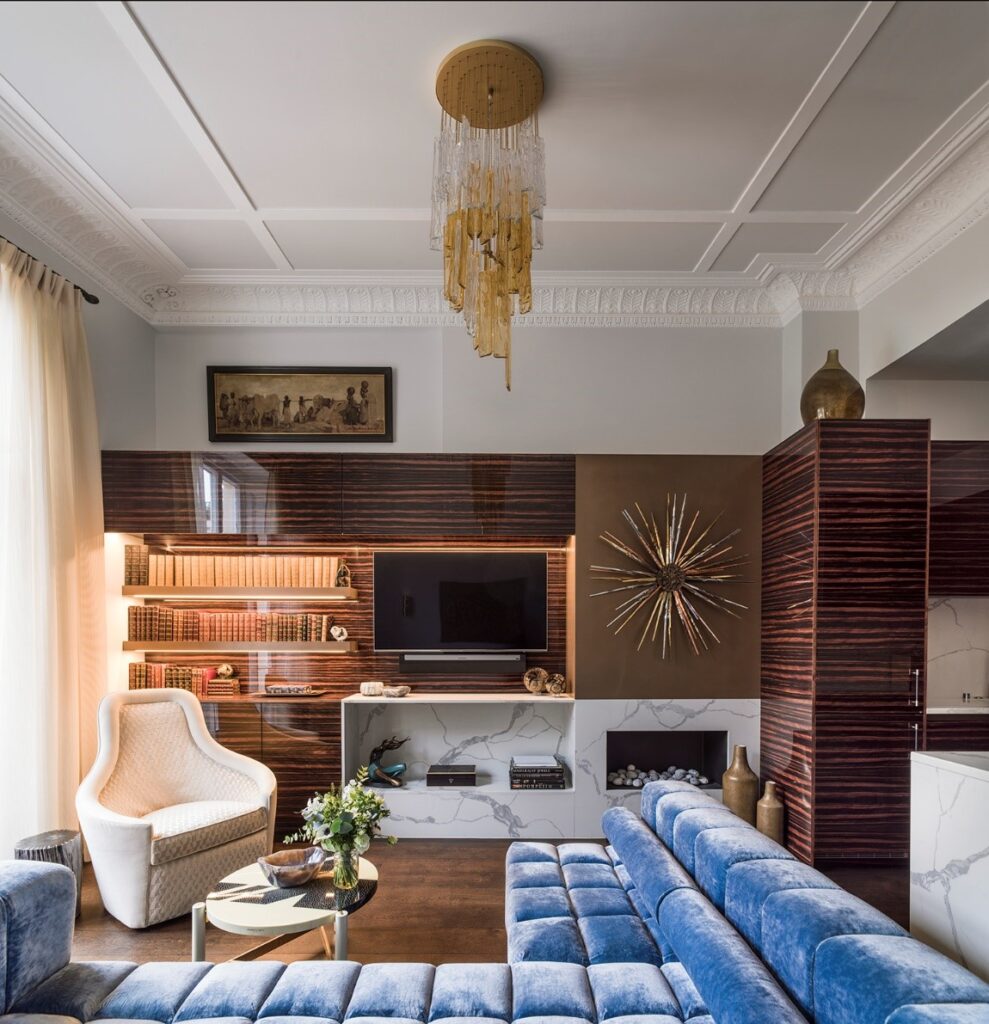
Texture
Texture is a key element in living room design right now, with designers opting for plush, tactile fabrics and materials. From velvet sofas to shaggy rugs, incorporating texture can add depth and interest to your space.
Minimalism
While maximalist designs have been popular in recent years, there is a growing trend toward minimalism in living room design. Streamlined furniture, clean lines, and a focus on simplicity can create a serene and calming living room. (Ny apartment)
Statement Lighting
Lighting is a crucial element in living room design, and statement lighting and multi-level fixtures can add a sense of drama and visual interest to your space. Consider incorporating a sculptural floor lamp, a large chandelier, or a series of unique pendant lights to make a statement.
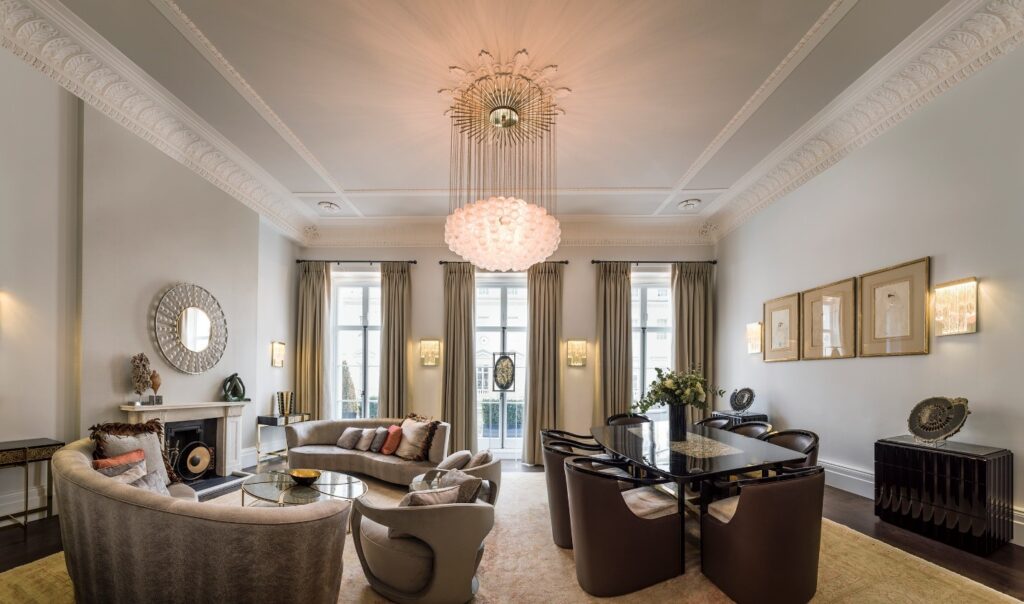
Eco-Friendly Design
As more and more people become environmentally conscious, there is a growing trend toward eco-friendly living room design. From furniture made from sustainable materials to energy-efficient lighting, incorporating eco-friendly design elements can create a more sustainable and responsible living room space.
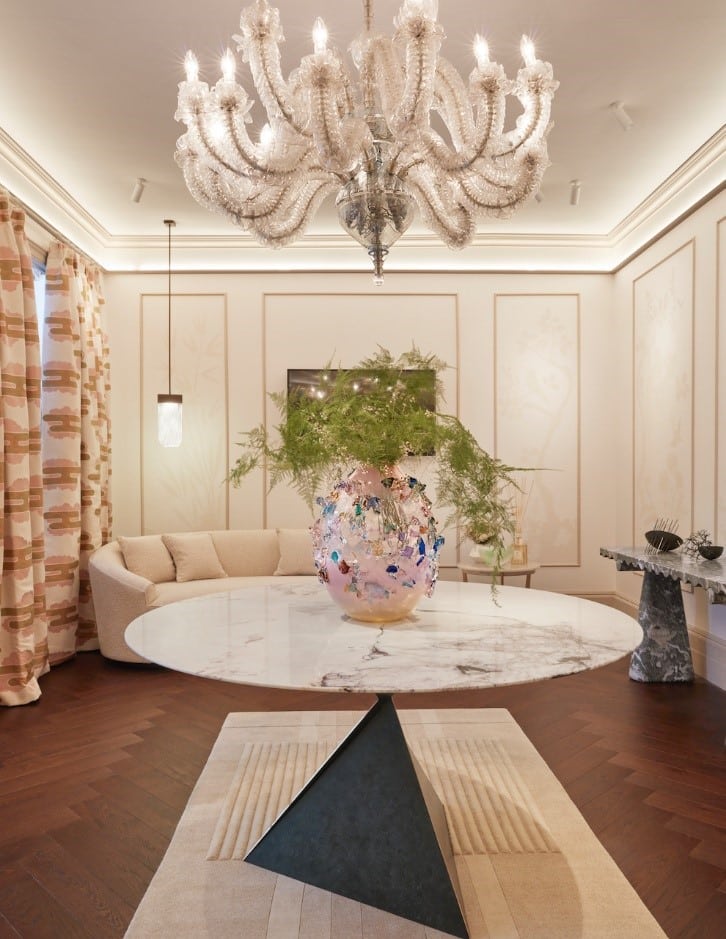
Above is a chandelier by French master craftsman Thierry Jeannot created from thousands of carefully selected, precisely cut pieces of waste P.E.T plastic bottles that, at first glance, appear to be crystal. Shalini Misra Studio featured this exquisite central piece to encourage visitors to reevaluate their preconceptions of material value, purpose and waste.
Vintage and Retro
Vintage and retro designs are making a comeback in living room design, with designers incorporating mid-century modern furniture, vintage art, and retro color palettes to create a sense of nostalgia and whimsy.
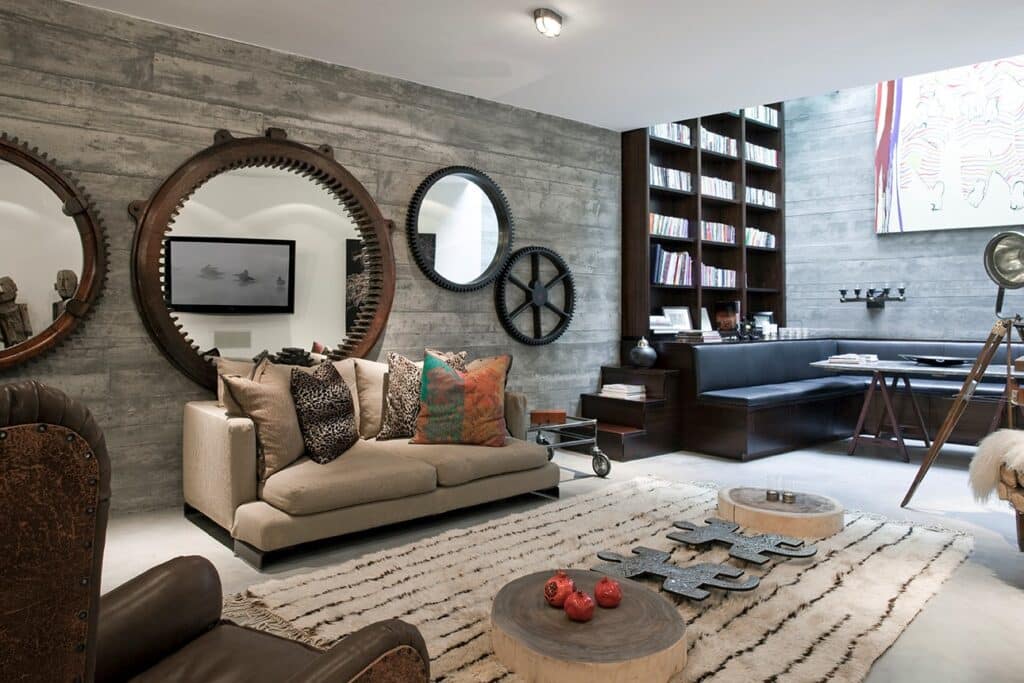
Mixed Metals
Mixing and matching different metal finishes, such as brass and copper, can add a sense of depth and interest to your living room design. From brass accents on a coffee table to copper pendant lights, don’t be afraid to experiment with mixed metals in your living room.
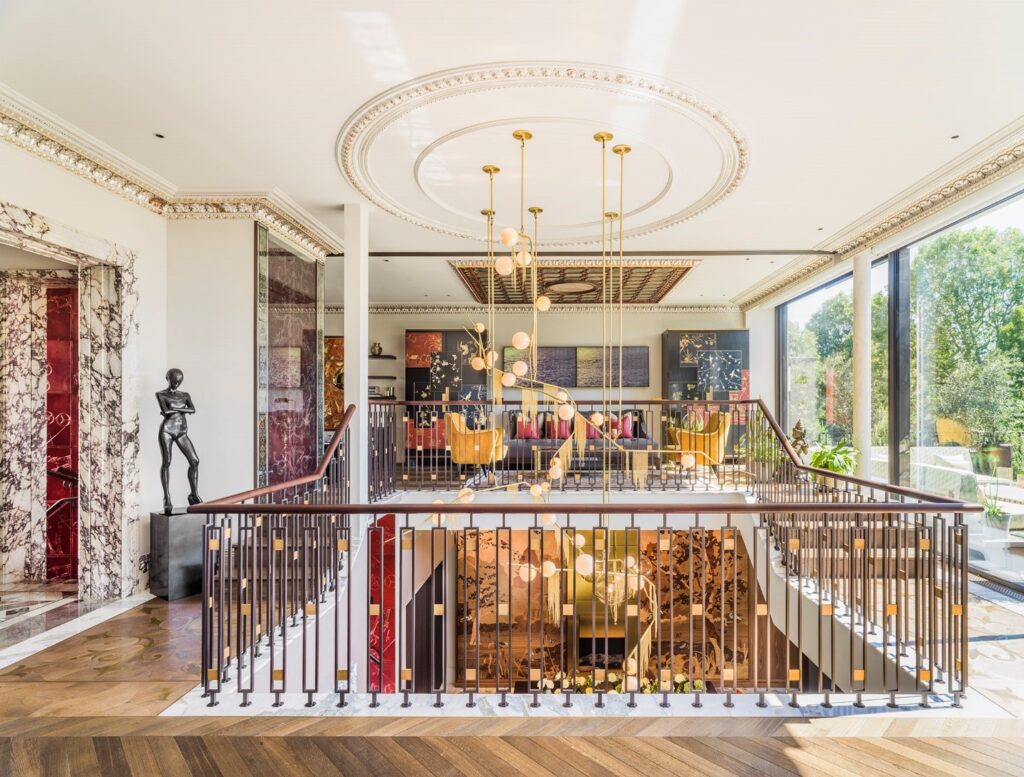
Indoor-Outdoor Living
With the rise of indoor-outdoor living, designers are incorporating elements of the outdoors into living room design. From indoor plants to large windows that blur the line between inside and outside, creating a seamless connection between your living room and the natural world can add a sense of calm and tranquility to your space.
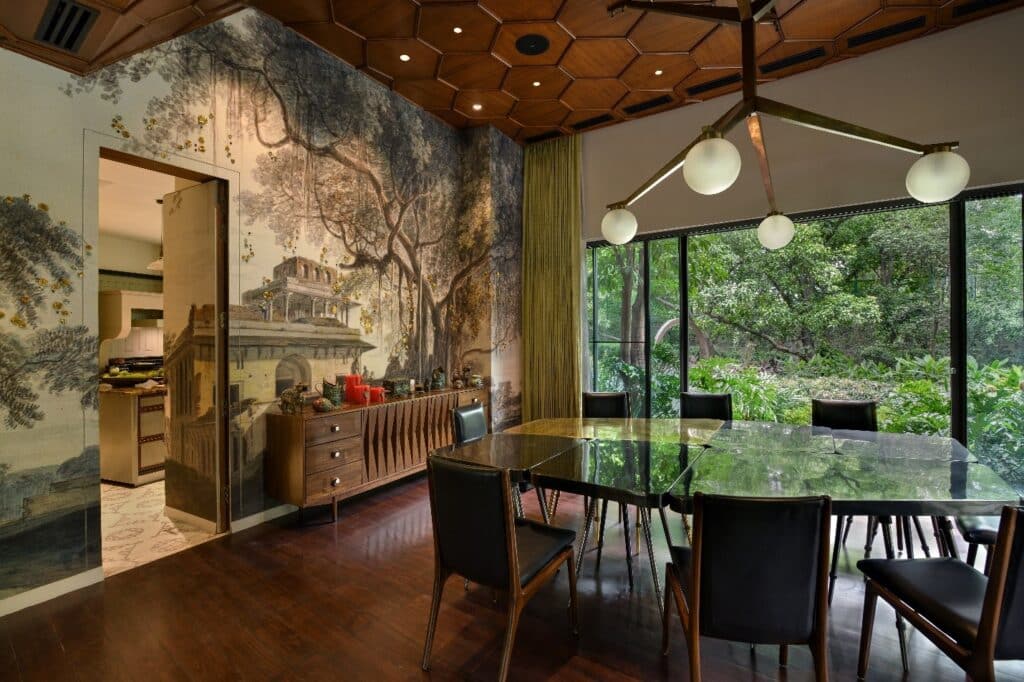
Incorporating one or more of these living room design trends into your space can create a stylish and functional living room that reflects your personal style and needs. Whether you opt for natural materials, bold colors, or mixed patterns, there are endless possibilities when it comes to designing a living room that is both beautiful and functional.
April 11, 2023


